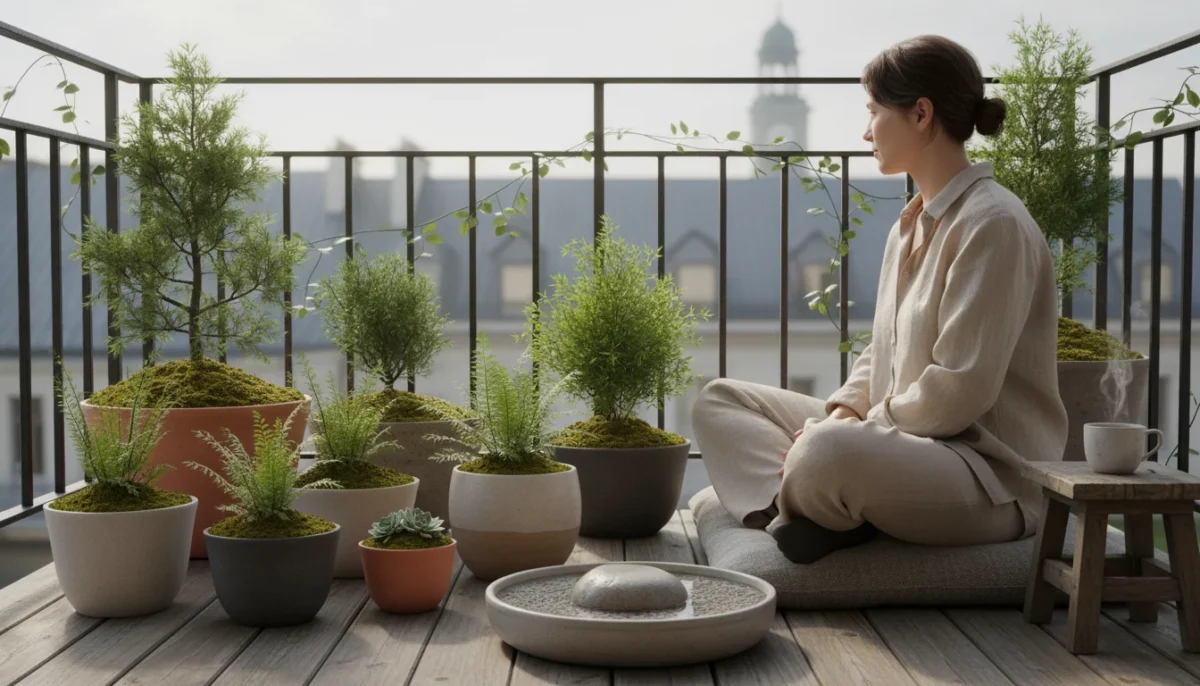You desire a tranquil escape, a place to find peace and calm, right outside your door. You might think creating a Zen garden requires expansive space, but this is a common misconception. Transforming your balcony, patio, courtyard, or compact yard into a serene Zen retreat is entirely achievable, regardless of its size. We focus on practical, actionable steps for crafting a beautiful, low-maintenance, and calming garden space. This guide empowers you to infuse the essence of Zen into your small outdoor area, providing a sanctuary where you can recharge and connect with nature.
For design and plant selection guidance, visit
Chicago Botanic Garden,
Brooklyn Botanic Garden and
New York Botanical Garden.
Disclaimer: This article is for informational purposes only and is not a substitute for professional advice. Consult local extension services for region-specific recommendations.
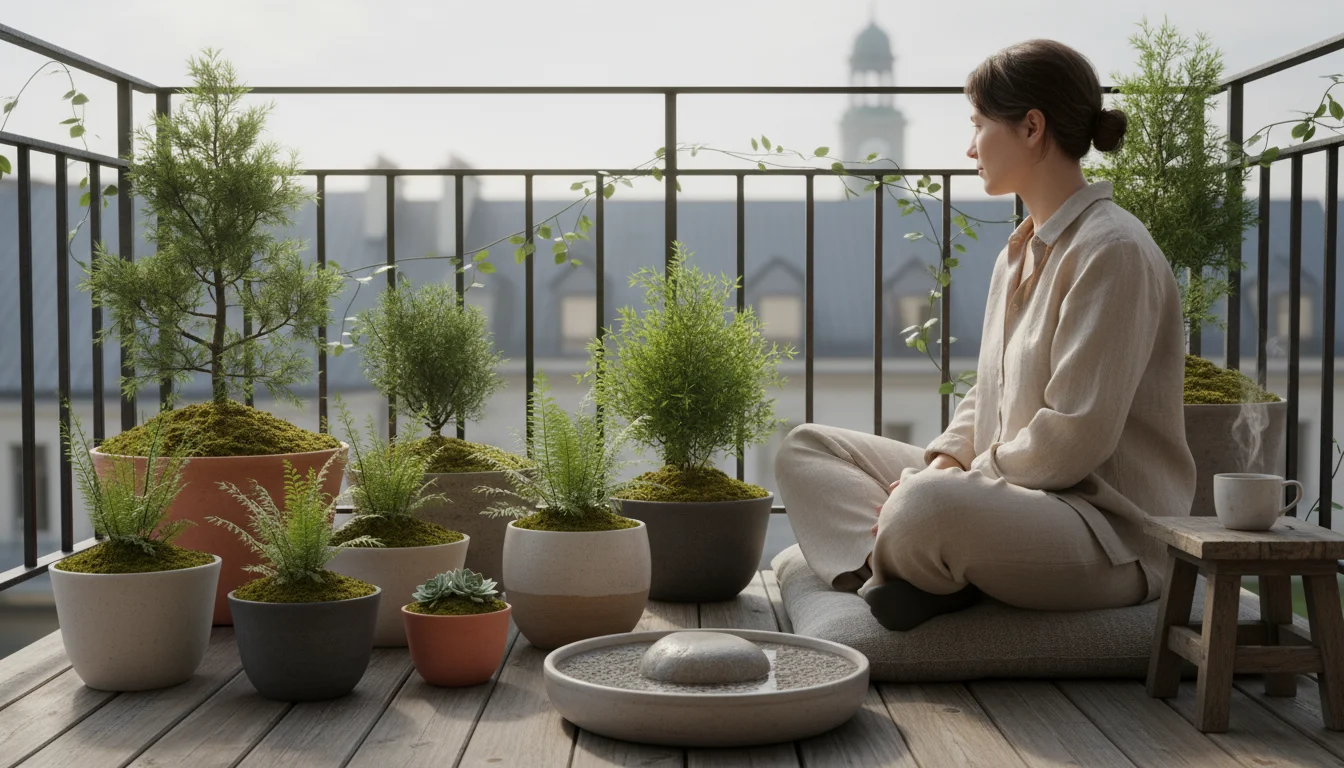
Zen Principles for Small-Space Serenity
A true Zen garden, whether large or small, embodies principles far beyond mere aesthetics. You create an environment that encourages contemplation, peace, and a connection to the natural world. Understanding these core principles helps you design an authentic and deeply calming garden space, even in a compact area. Embrace these ideas as you embark on your zen garden design journey.
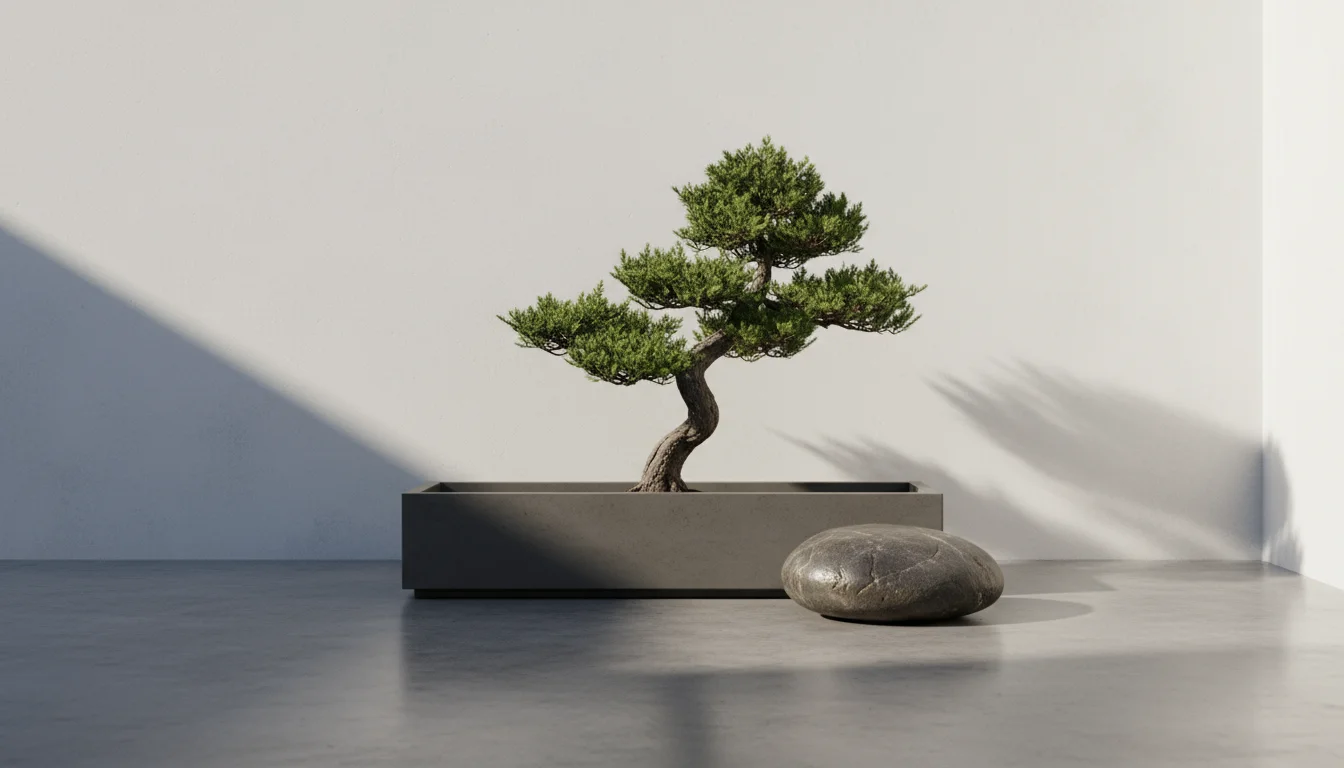
Kanso: Simplicity
Kanso champions simplicity, eliminating clutter and focusing on essential elements. For a small space, this means choosing only a few key features that serve a purpose. Avoid overcrowding. Each rock, plant, or decoration you include should have a deliberate place and contribute to the overall tranquility. You achieve a minimalist look that feels open and spacious, not empty.
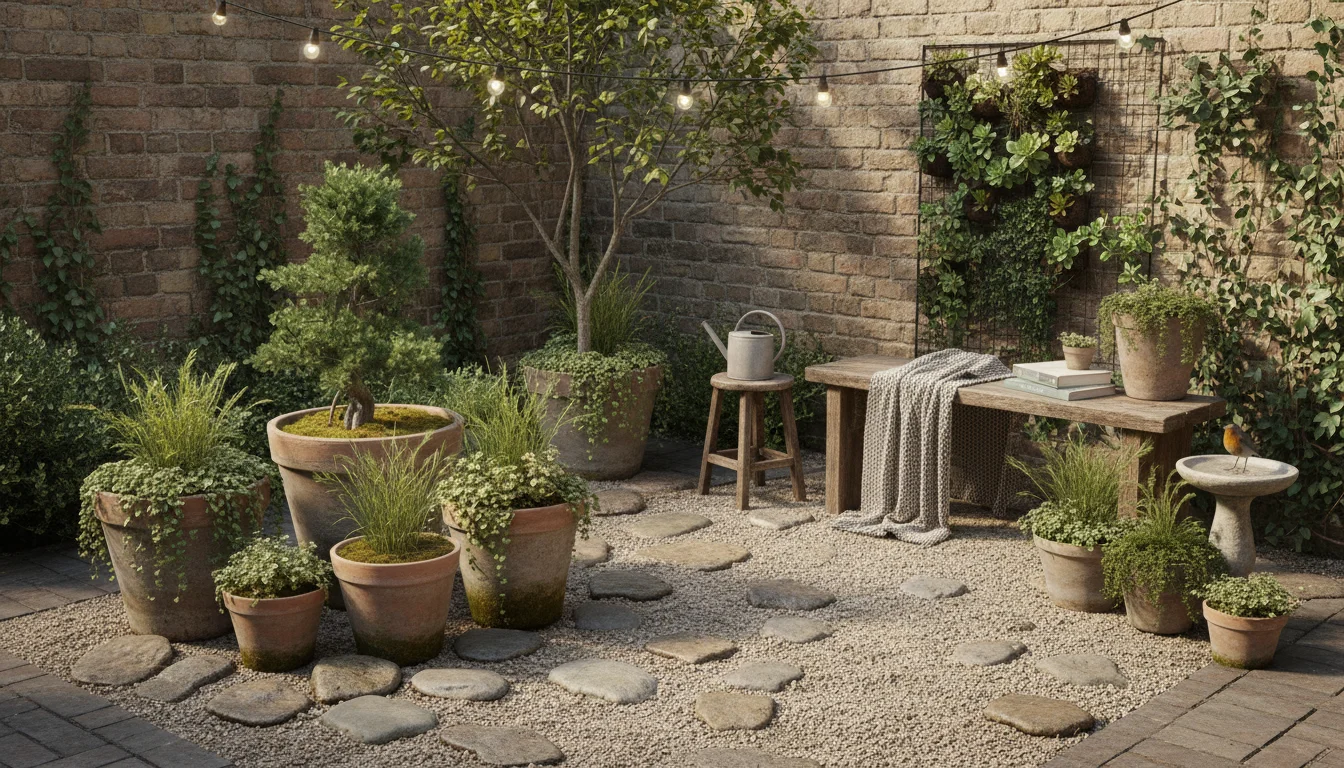
Shizen: Naturalness
Shizen emphasizes naturalness, preferring irregular, organic forms over perfect symmetry. You design a garden that feels as if nature created it, even with human intervention. Use natural materials like stone, wood, and plants. Arrange elements in an asymmetrical way that mimics natural landscapes, avoiding straight lines and rigid patterns. This principle helps your small backyard zen feel less manufactured and more integrated with its surroundings.
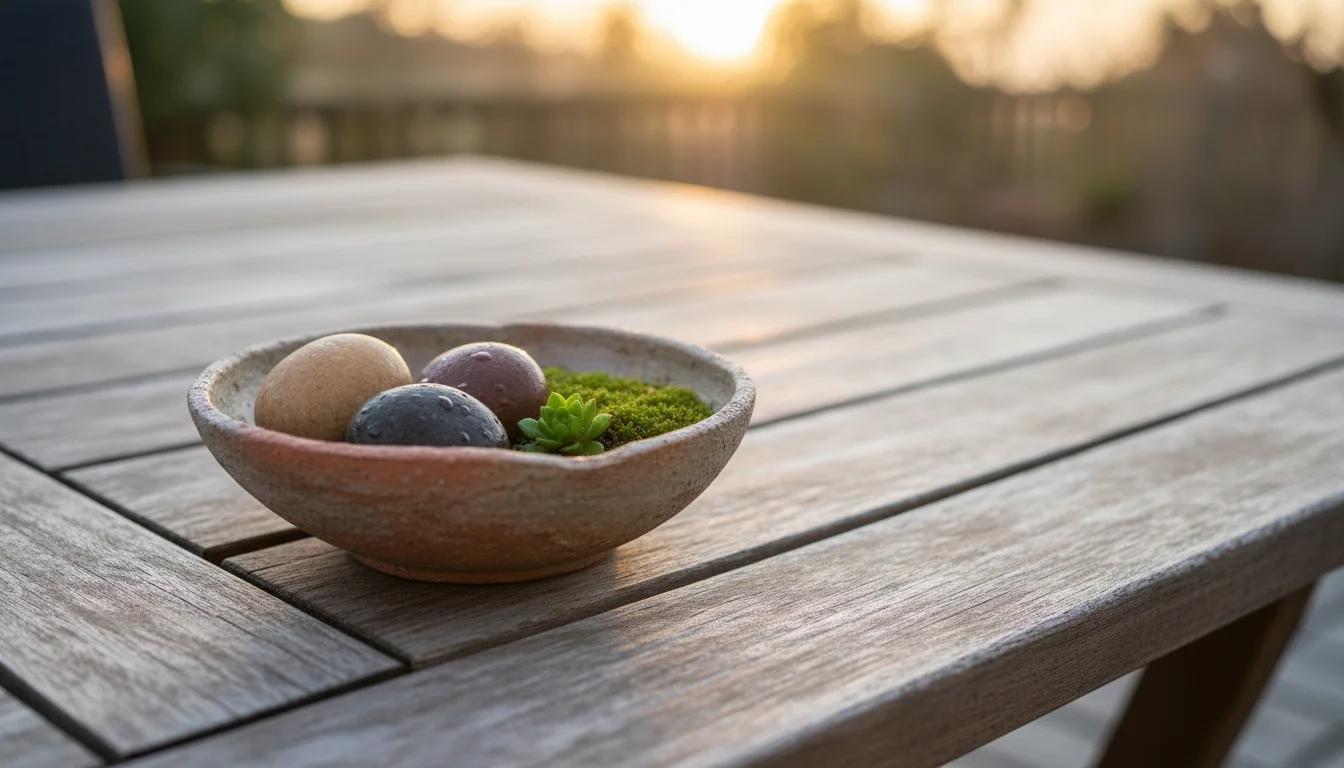
Fukinsei: Asymmetry
Fukinsei is the principle of asymmetry and irregularity, which often creates balance more effectively than strict symmetry. You place elements unevenly to achieve visual harmony and interest. For example, arrange rocks in odd-numbered groups (three, five, seven) rather than even pairs. This approach feels dynamic and natural, guiding your eye through the space in an engaging way.
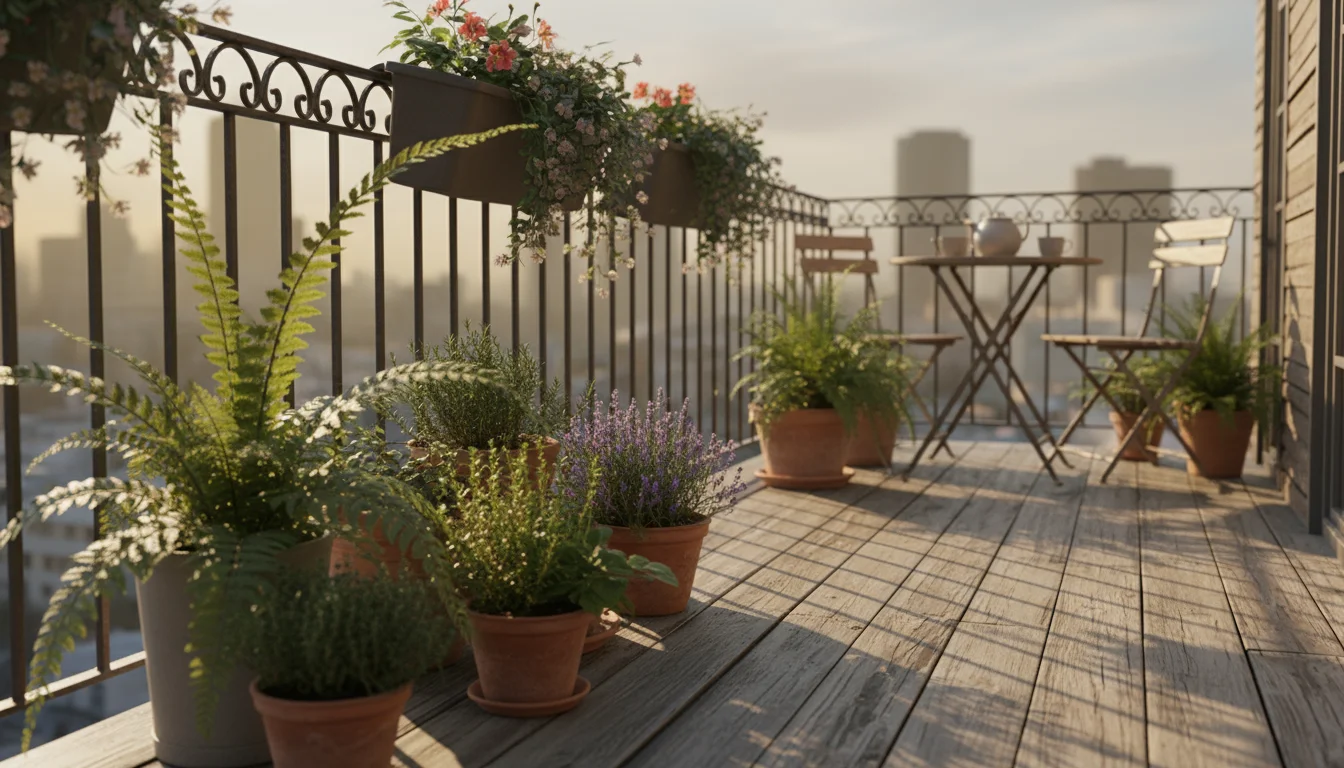
Yugen: Subtlety and Suggestion
Yugen refers to a profound, mysterious, and subtle beauty. Your garden should suggest more than it explicitly shows, inviting contemplation and imagination. You achieve this by partially obscuring elements, using shadows, or creating visual depth that draws the viewer in. A hidden path, a partially visible plant, or the sound of water can evoke Yugen, fostering a sense of wonder and calm.
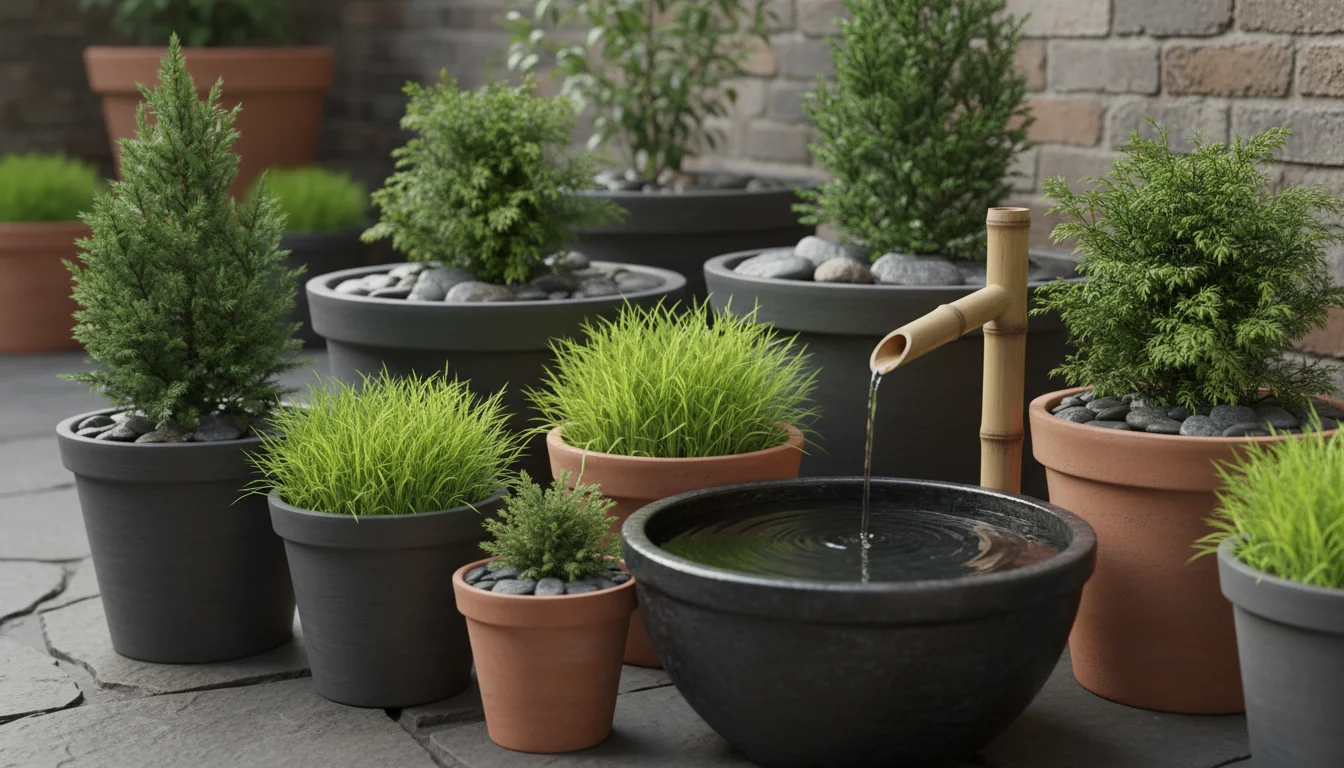
Seijaku: Tranquility and Quiet
Seijaku embodies tranquility and quietude. Your Zen garden serves as a peaceful retreat, a place free from distractions. You select elements that promote stillness and relaxation. Think about soft sounds like rustling leaves or trickling water, and visually calming colors. Minimize jarring noises and bright, distracting elements to cultivate a truly serene atmosphere.
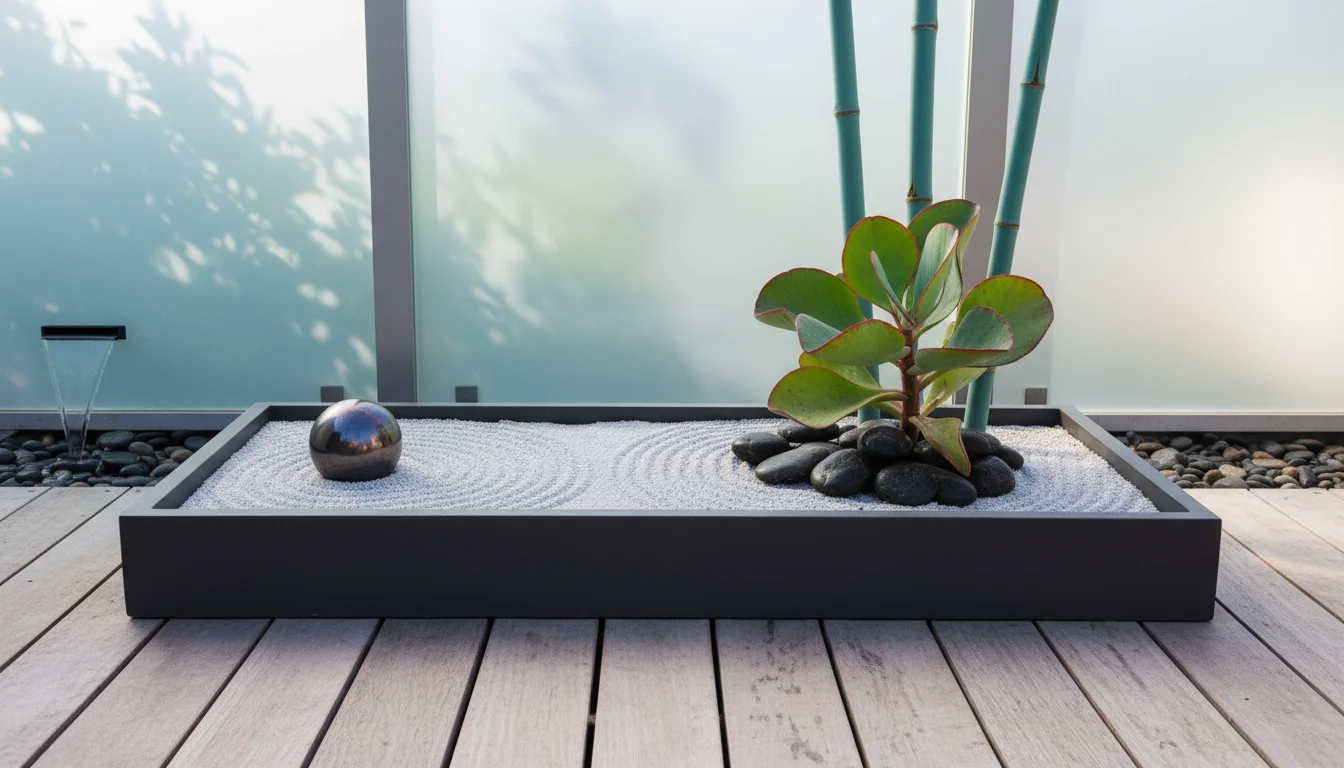
Datsuzoku: Freedom from Habit
Datsuzoku encourages freedom from convention and habits, promoting originality and breaking away from the mundane. While Zen gardens follow certain principles, you do not need to replicate traditional designs exactly. Adapt these ideas to your specific space and personal preferences. Your garden reflects your unique spirit, offering a fresh perspective. This means you can integrate modern containers or unconventional plants, provided they maintain the overarching sense of calm and naturalness.
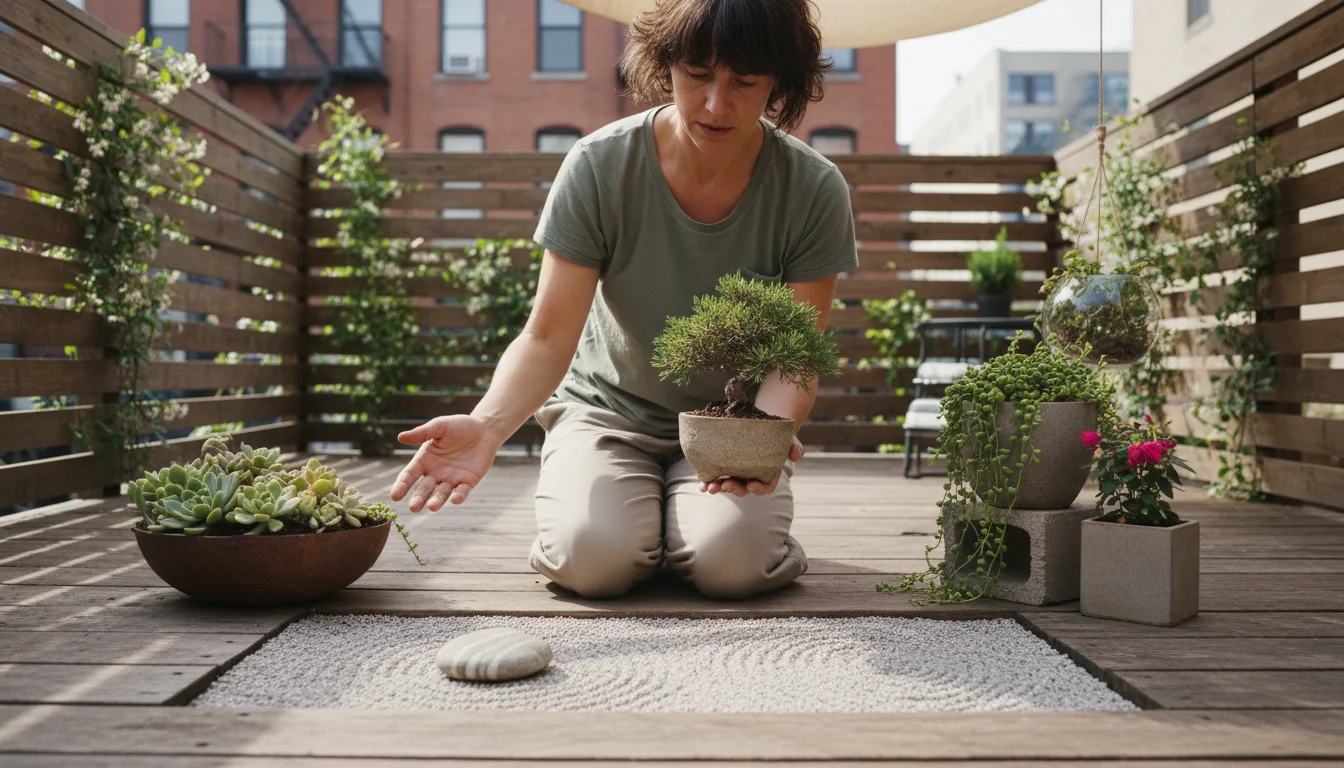
Designing Your Miniature Layout
Effective layout design is crucial for small spaces. You want to maximize functionality, create visual interest, and maintain an open, uncluttered feel. Think of your small garden as a canvas where every element serves a purpose in creating a calming garden ideas retreat. You establish clear zones, manage traffic flow, and thoughtfully position your focal points to achieve this.
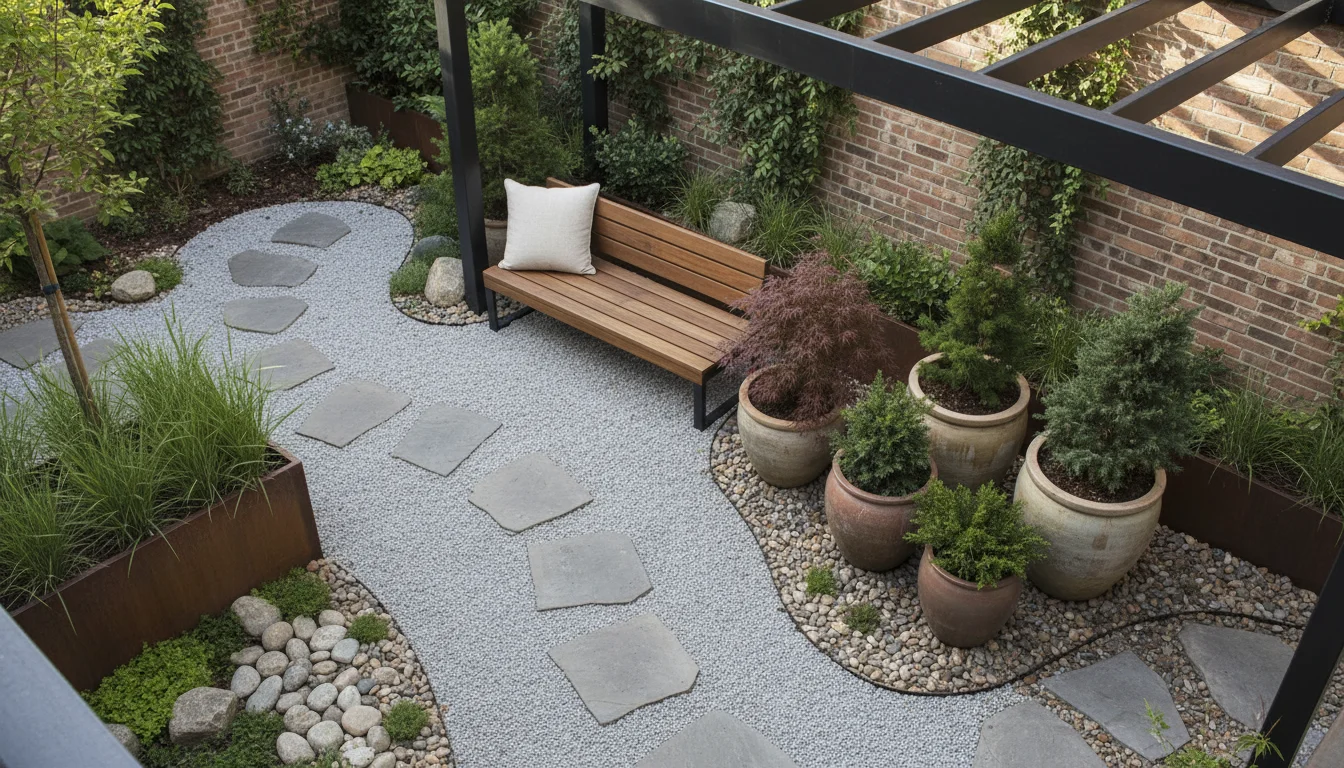
Defining Zones
Even in a small space, you can define functional zones. Consider areas for relaxation, contemplation, and perhaps a small display. You can delineate these zones using changes in ground material (e.g., a small patch of raked gravel next to a stepping stone path), container groupings, or low screens. A clearly defined relaxation zone with a comfortable cushion or bench invites you to sit and reflect. A simple rule of thumb suggests allowing at least 24-30 inches for comfortable passage along a path or between furniture pieces. This ensures you move freely without feeling cramped.
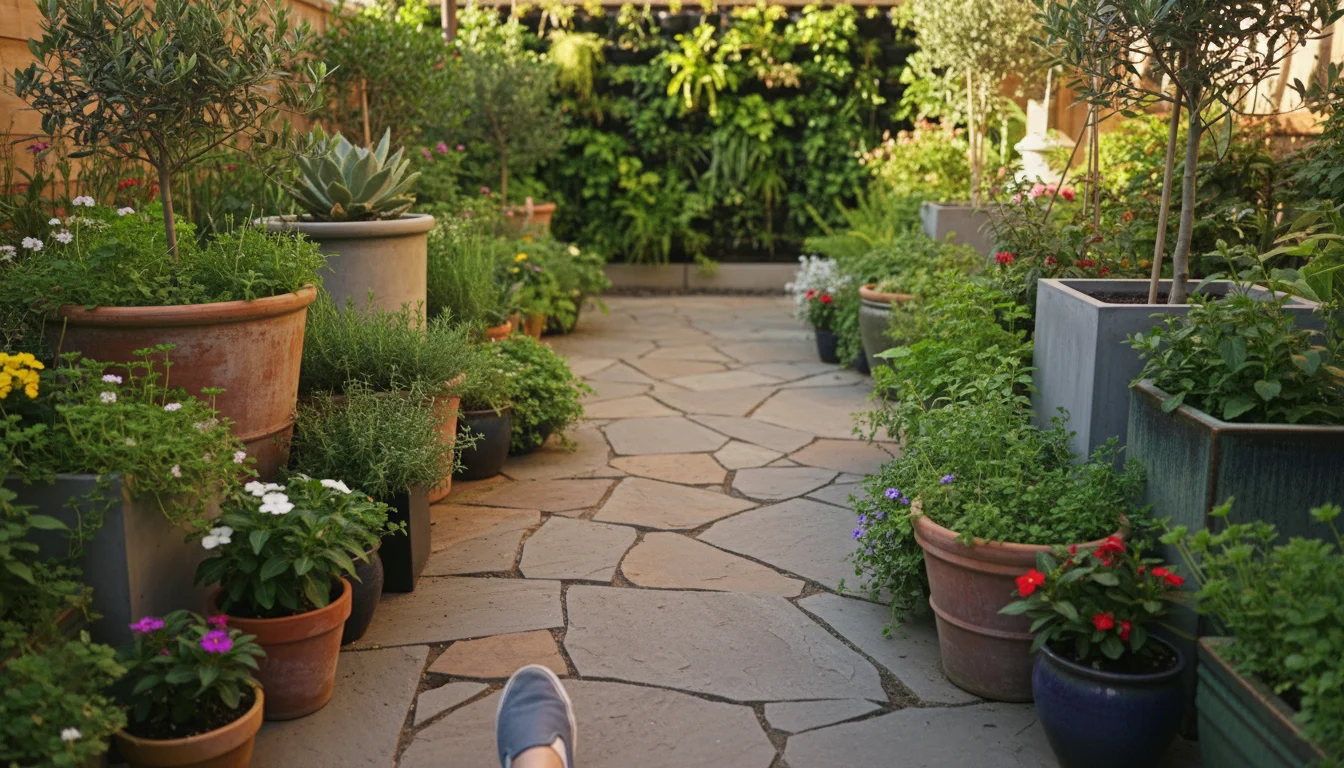
Traffic Flow and Circulation
Plan your paths carefully. You need clear, unobstructed routes to move through your garden without disturbing its tranquility. Use stepping stones, small sections of gravel, or a single defined path. Avoid winding paths in very tight spaces, which can feel cluttered. Instead, opt for a direct path or allow for gentle curves that lead to a specific point, like a seating area or a focal point. Ensure your main circulation paths are wide enough for comfortable movement, generally at least 24 inches for a single person to pass. You want easy access to all parts of your garden for maintenance and enjoyment.
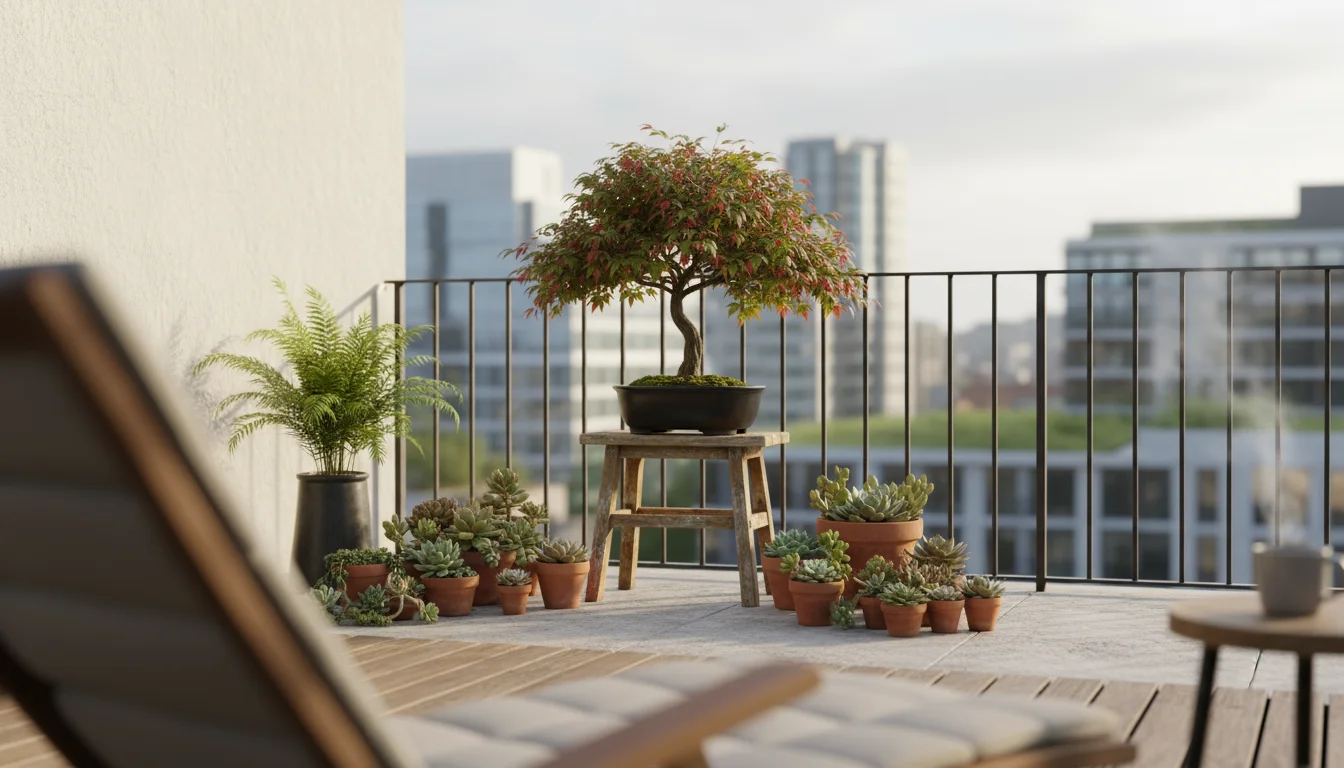
Focal Points and Sightlines
Every Zen garden benefits from a focal point, the element that first captures your eye. This could be a unique rock, a miniature tree, a small water feature, or even a strategically placed lantern. You position your focal point to be visible from your main viewing areas, such as indoors looking out, or from your primary seating spot. For small spaces, a single, strong focal point often works best. You avoid multiple competing elements that can create visual clutter. Consider the sightline, the path your eye takes. You guide the viewer’s gaze through the garden by placing elements deliberately, creating depth and leading them to your chosen focal point.
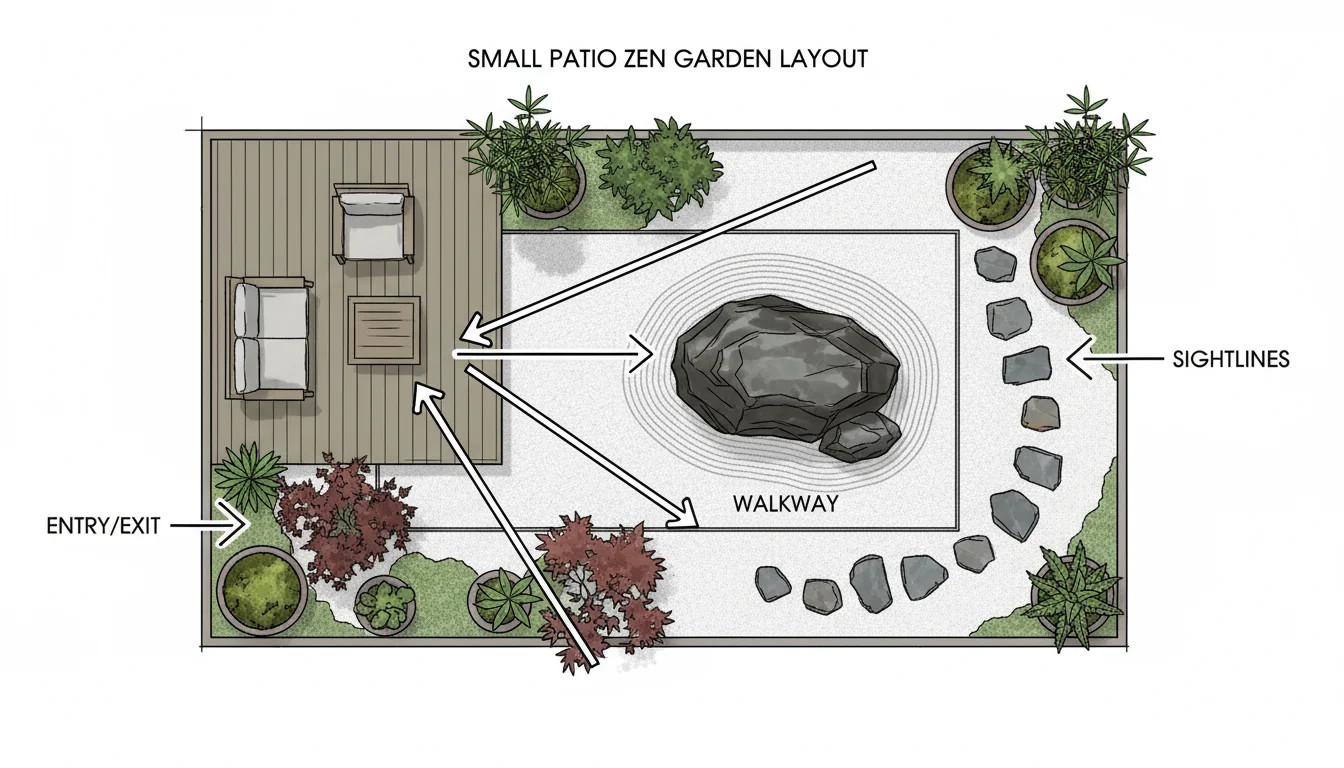
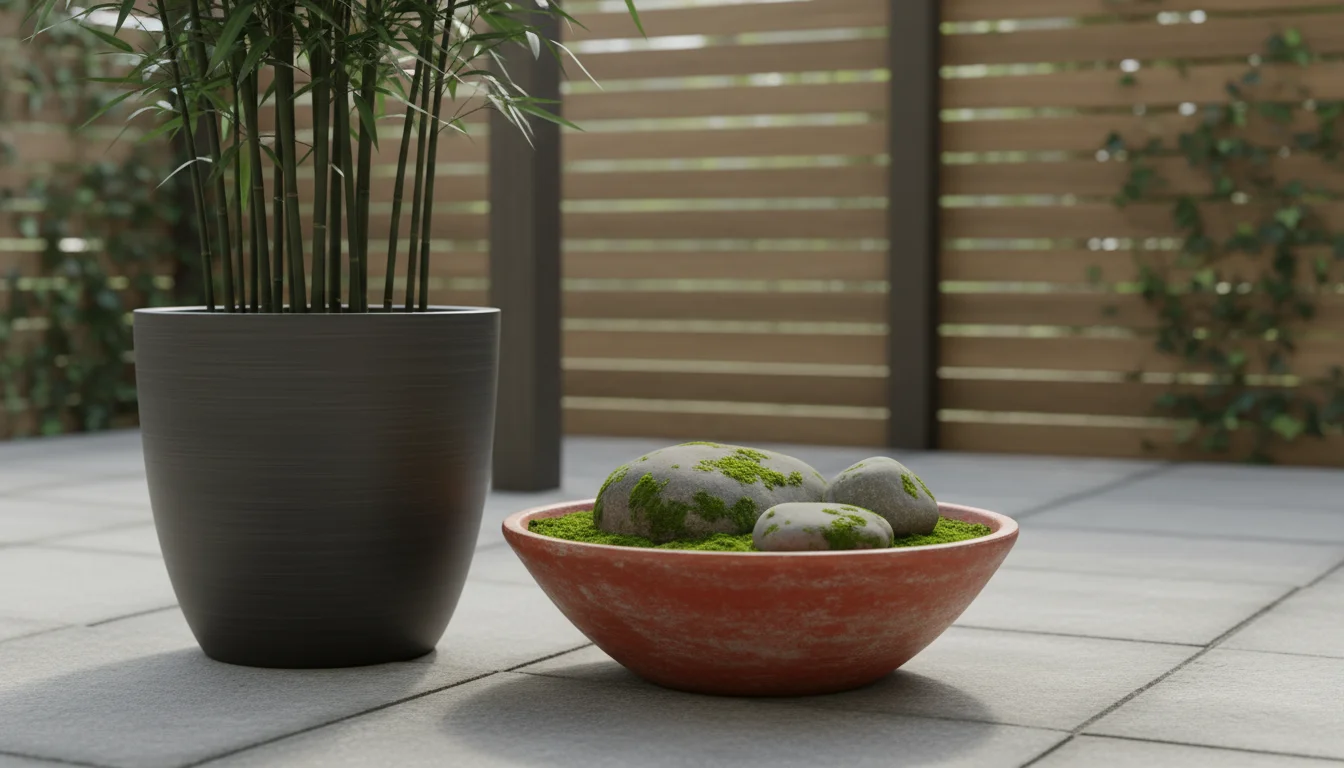
Asymmetrical Balance
Embrace asymmetry, a cornerstone of Zen design. You achieve balance not by mirroring elements, but by distributing visual weight unevenly yet harmoniously. For example, a tall plant on one side can be balanced by a cluster of lower, wider rocks on the other. This creates a more dynamic and natural feel than rigid symmetry. You arrange elements to draw the eye, creating a sense of natural composition.
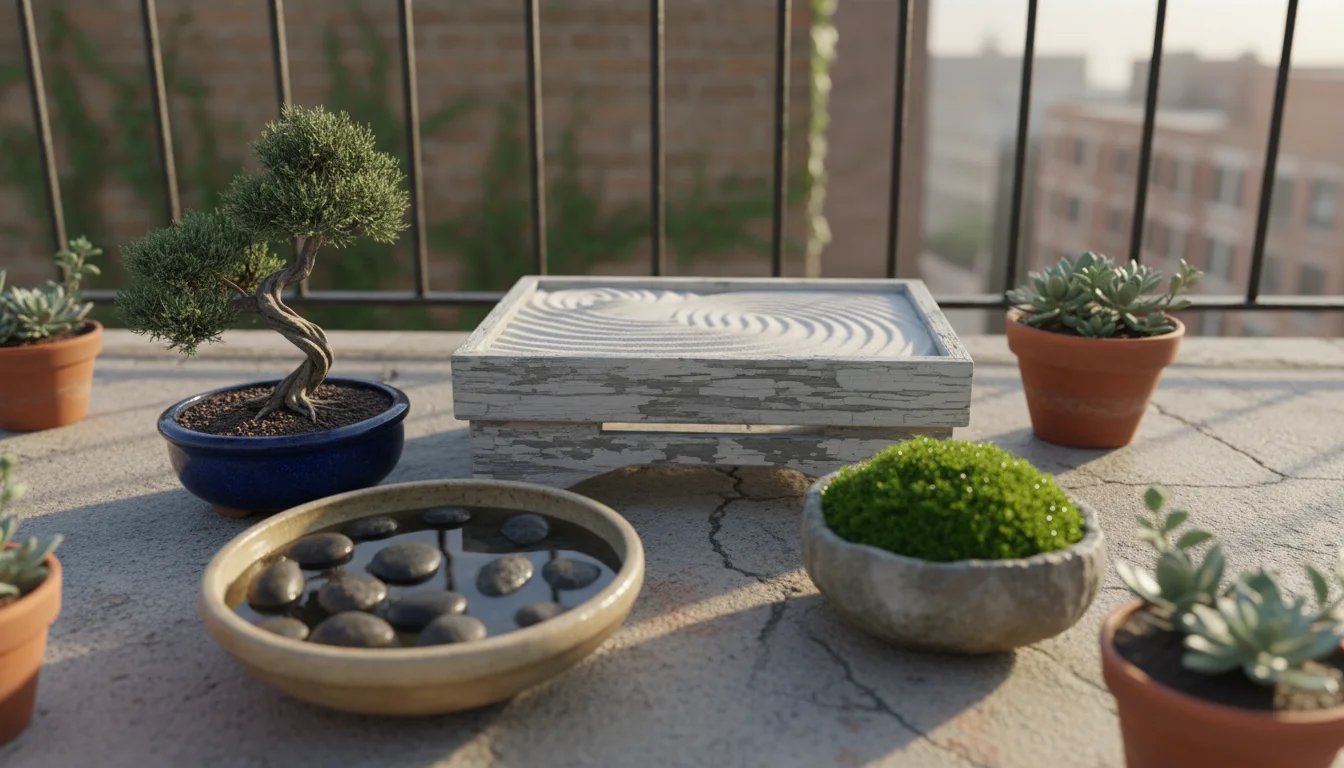
Essential Elements of a Zen Garden
Traditional Zen gardens utilize specific elements to symbolize natural landscapes and evoke contemplation. You can adapt these elements beautifully for a small space, creating a rich symbolic environment.
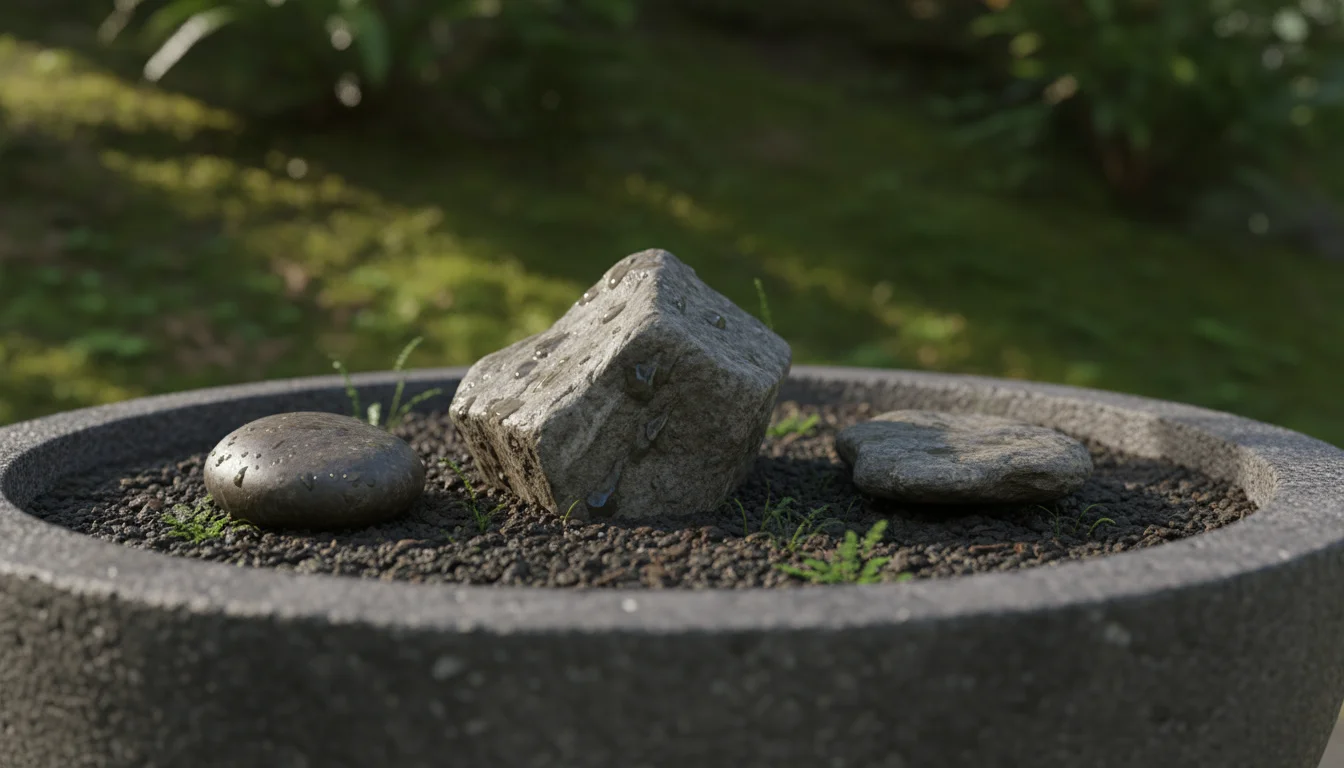
Rocks: The Bones of the Garden
Rocks represent mountains, islands, or even animal forms. You select rocks with character, interesting textures, and varied shapes. Avoid highly polished or artificially shaped stones. Place rocks intentionally in groups of odd numbers, typically three or five, to create a natural, asymmetrical composition. Larger rocks anchor the design, while smaller ones add detail. For small spaces, you might choose one prominent focal rock and a few smaller companion stones. Ensure the rocks sit securely, partially buried to look as if they have always been there. You create a sense of permanence and natural integration.
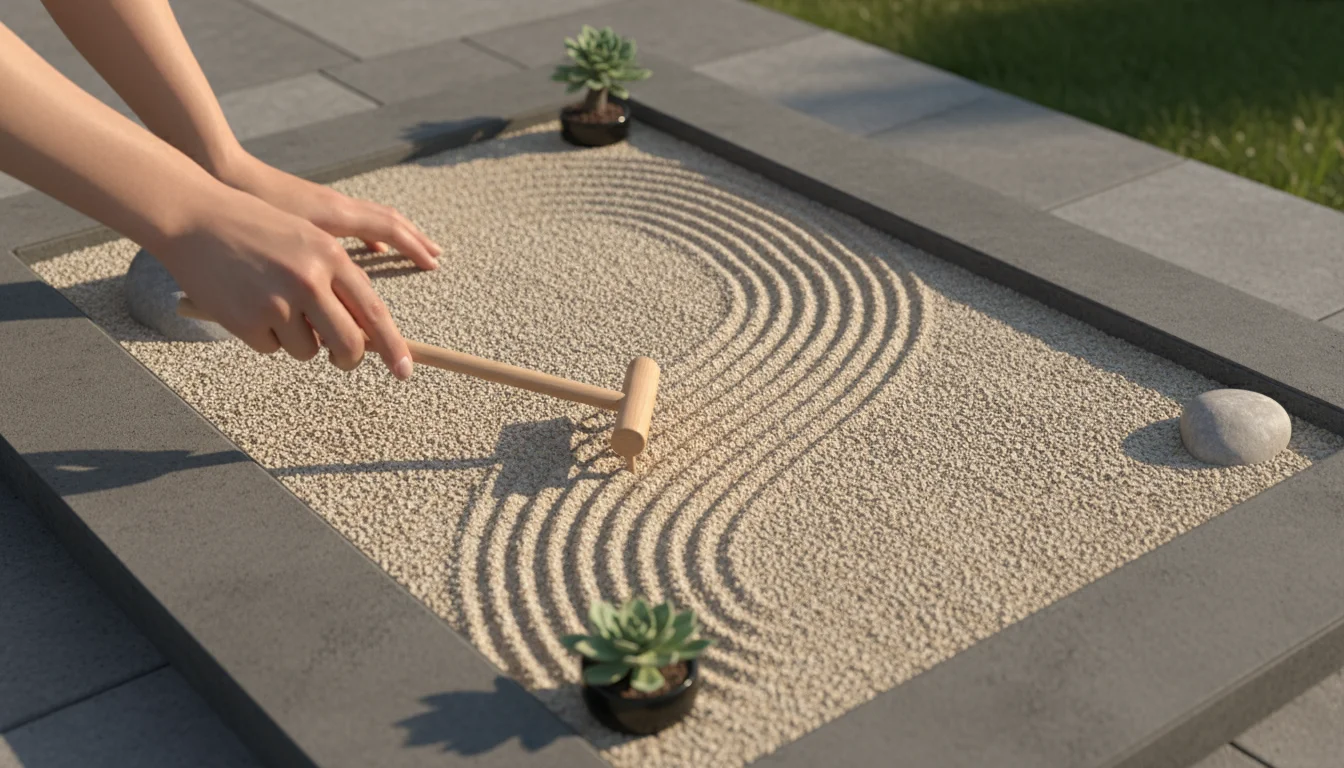
Sand or Gravel: The Raked Sea
Sand or fine gravel symbolizes water, representing oceans, rivers, or calm ponds. You choose a neutral color, typically light gray or tan, to promote a sense of openness and purity. Raking patterns in the gravel symbolize waves or ripples. For a small patio, you might define a small, contained area, perhaps 2×3 feet, for raked gravel. You use a mini rake or even a chopstick to create simple, flowing patterns. This practice becomes a meditative act in itself, offering a moment of focused calm. Ensure the gravel is contained with a subtle border, like landscape edging or a low timber, to prevent scattering.
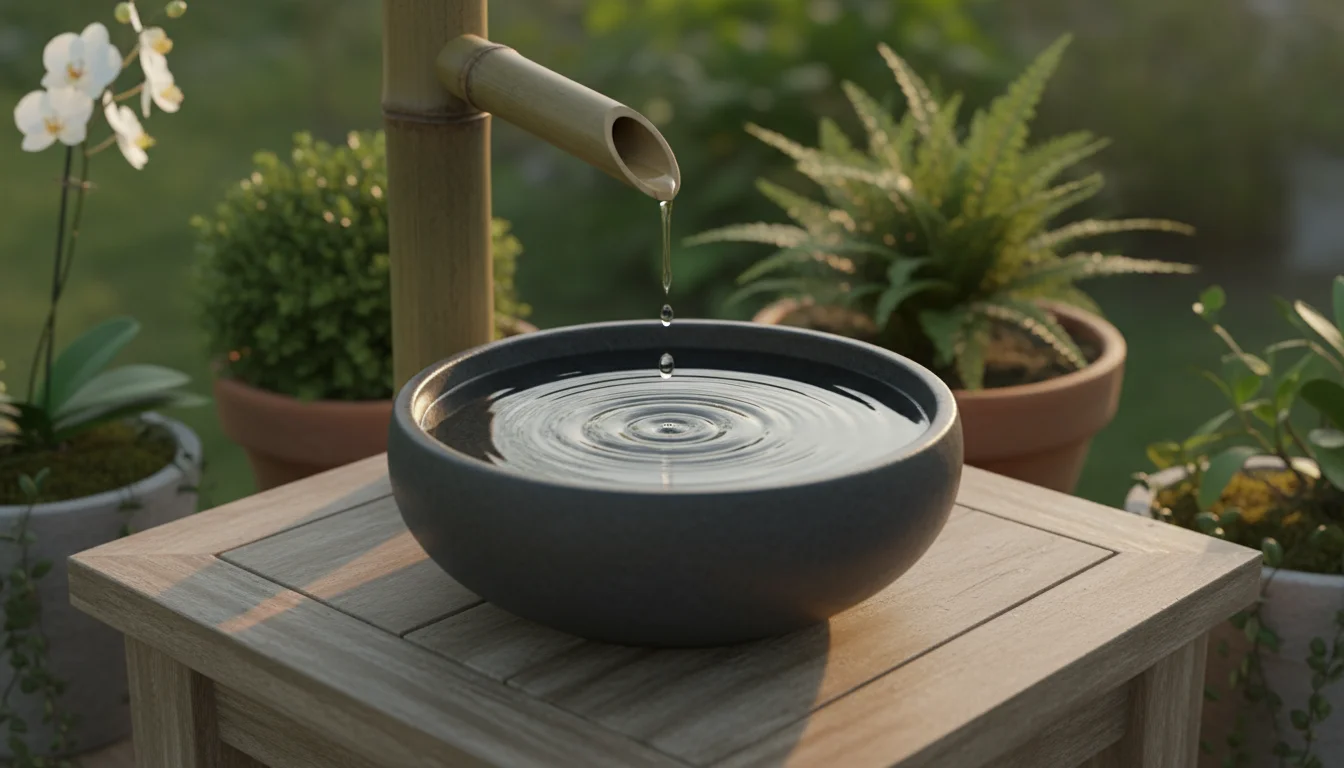
Water Features: Sound and Reflection
While large ponds are impractical, you can incorporate small water features. A bamboo spigot gently dripping into a basin, a small tabletop fountain, or a simple bird bath provides the soothing sound of moving water. You select features that create subtle sounds, avoiding loud splashes. The reflection of light on water also adds a dynamic, calming element to your calming garden ideas. Ensure any electrical components are outdoor-rated and safely installed.
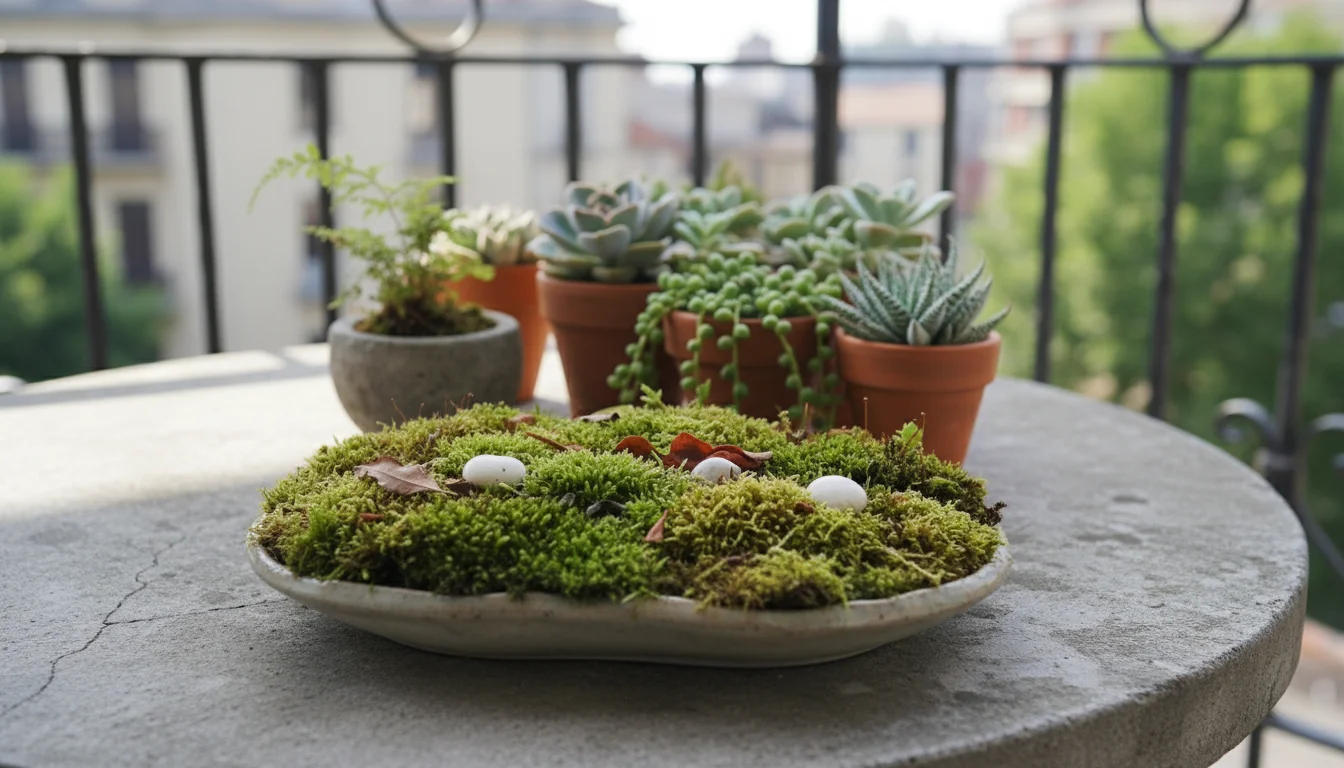
Moss and Small Plants: Greenery and Texture
Moss creates a lush, ancient feel and symbolizes islands or natural ground cover. You can grow moss in shallow trays or between stepping stones. For small spaces, consider moss carpets or even artificial moss if natural conditions are not ideal. Beyond moss, select small, slow-growing plants that fit the scale. Think about miniature evergreens, ground covers, or low-growing ferns. These plants introduce softness, texture, and a touch of living greenery without overwhelming the space. You select plants with subtle colors and interesting forms, rather than large, showy blooms.
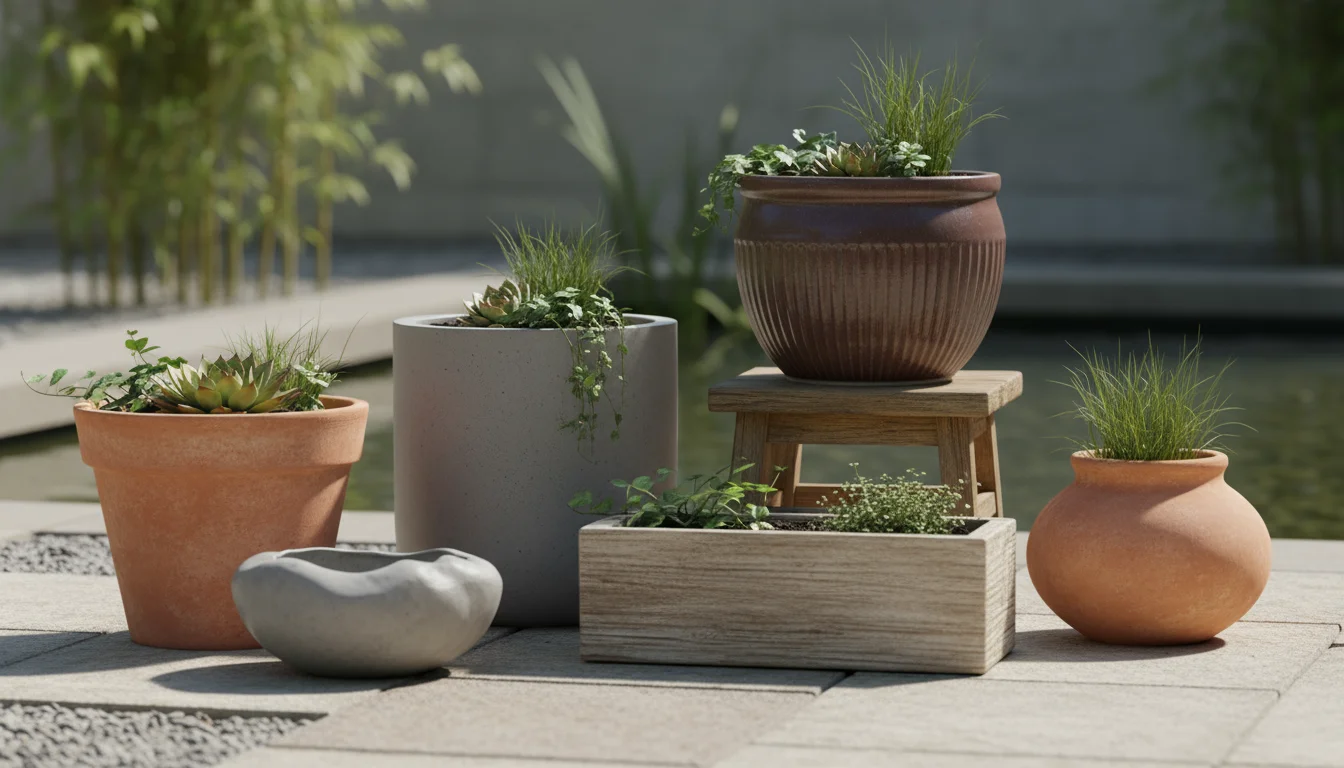
Mastering Container Choices
Containers are your essential tools for small-space Zen garden design. They offer flexibility, allow you to create distinct plant groupings, and can move easily. You choose containers that complement the Zen aesthetic, focusing on natural materials and a cohesive look.
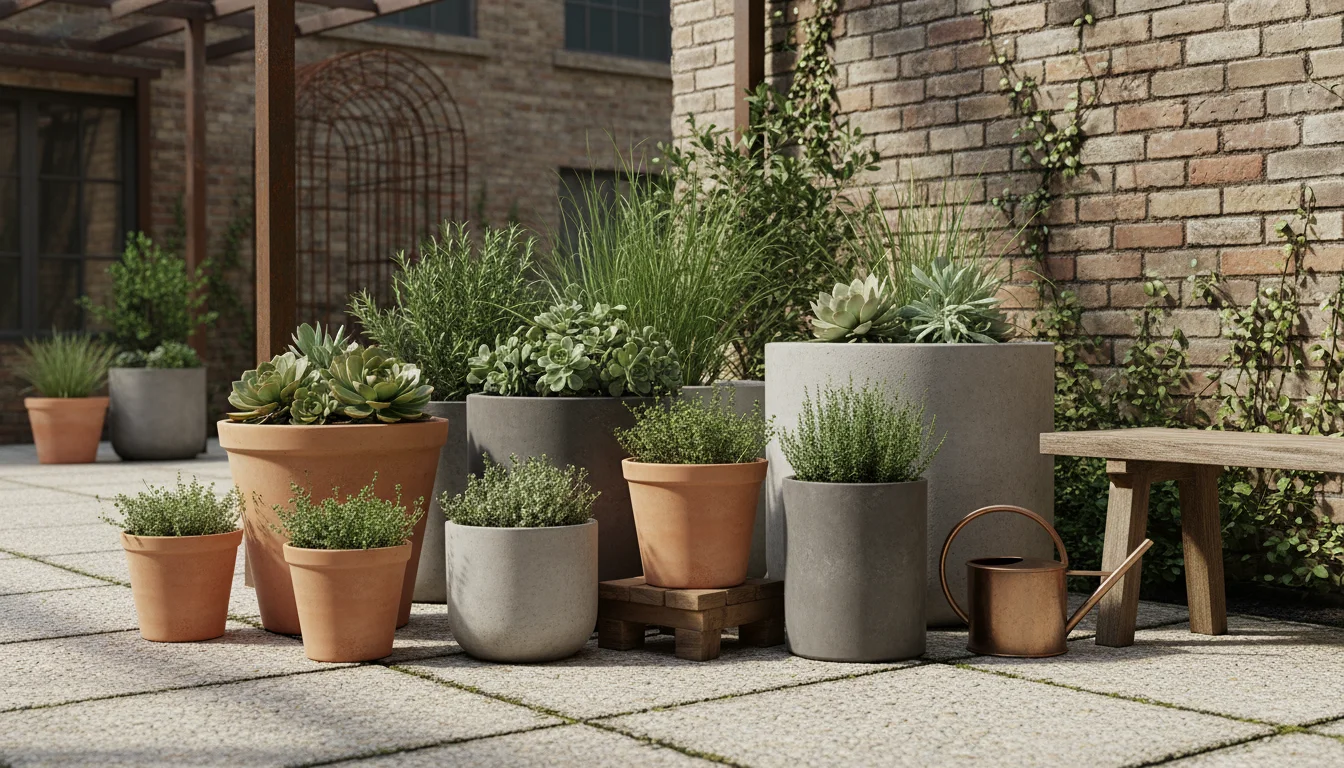
Material and Color Cohesion
You select containers made from natural materials like terracotta, unglazed ceramic, concrete, or stone. Avoid brightly colored or highly ornate pots. Earth tones, grays, and natural greens create a harmonious and understated palette. You do not need every pot to match exactly, but aim for a cohesive collection that shares a similar style or color family. For example, a mix of charcoal gray concrete planters and light gray stone pots creates a unified, calming look. This consistency helps to prevent visual clutter and reinforces the minimalist aesthetic.
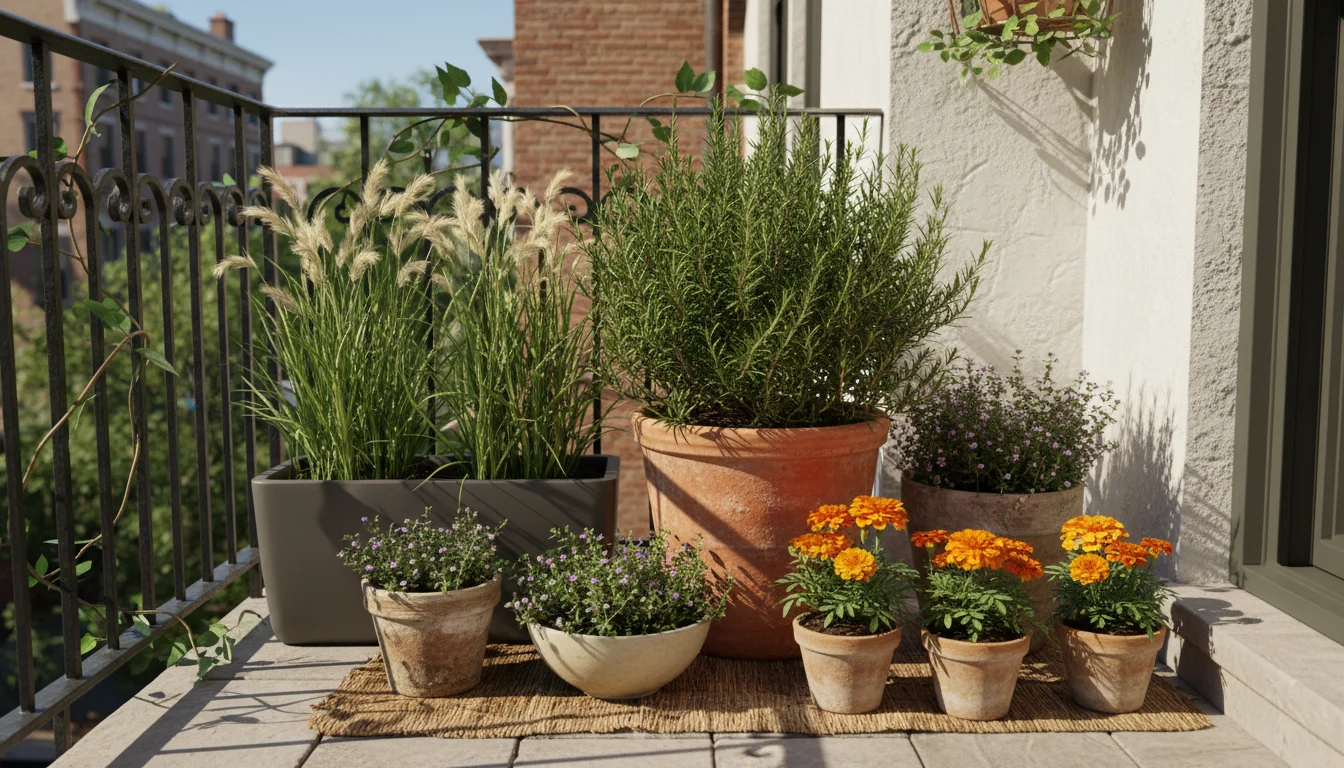
Sizing for Impact and Scale
Varying container sizes adds visual interest and depth. You use larger pots for your focal plants and smaller ones for ground covers or accents. Ensure the container size is appropriate for the plant’s mature size to minimize frequent repotting. A general rule for plant health suggests a container with a diameter at least 1-2 inches larger than the plant’s root ball for new plantings, allowing for growth. For a compact space, you avoid overly massive containers that dwarf the area. Instead, use a few medium-sized pots (10-14 inch diameter) and several smaller ones (6-8 inch diameter) to create an appealing arrangement.
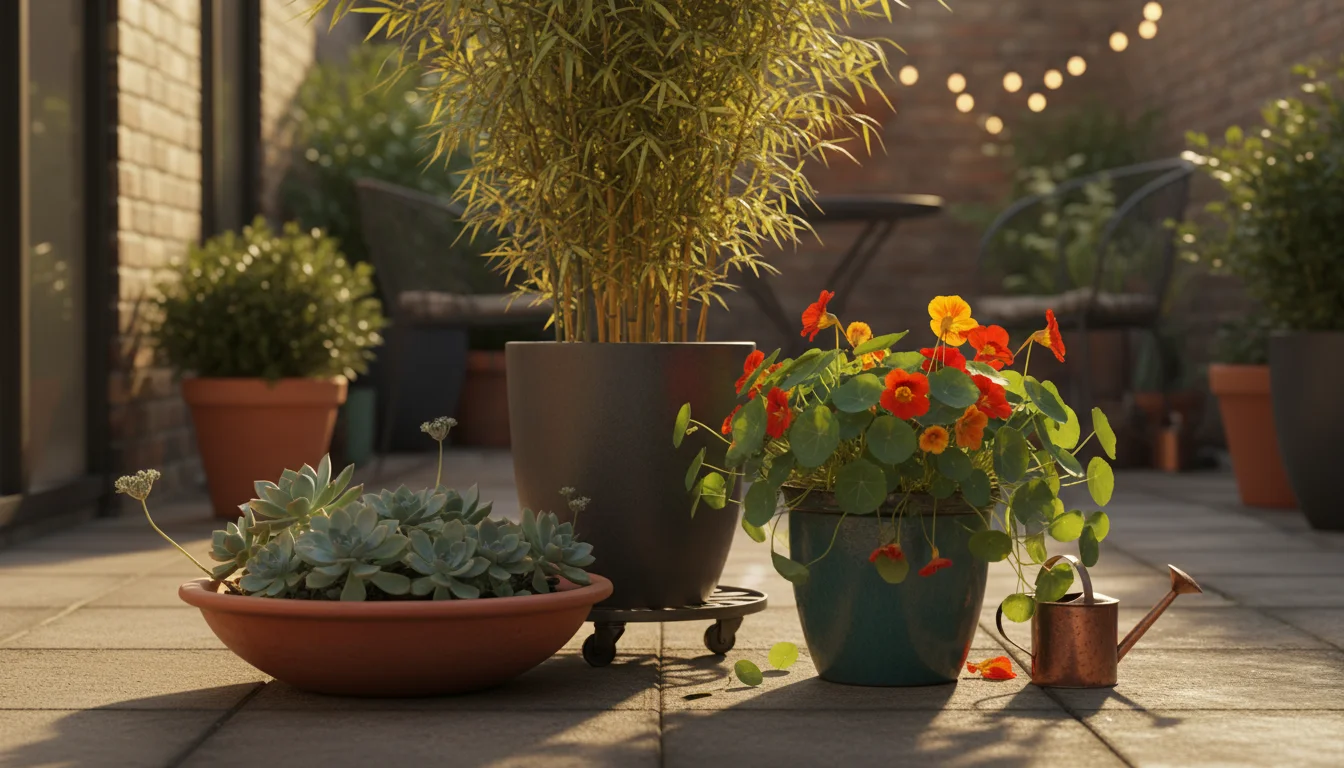
Arrangement and Grouping
You arrange containers in groups, rather than scattering them individually. Grouping creates a more impactful display and contributes to the visual flow. For a balanced look, arrange pots in odd numbers (three or five) at varying heights. Place taller plants in the back or center of a grouping, with shorter plants in front. You can also use risers or small overturned pots to elevate some containers, adding vertical interest. Consider placing larger, heavier containers on wheeled bases if you want the flexibility to rearrange your layout or move plants for optimal sunlight or protection from weather. This empowers you to adapt your garden’s look with ease.
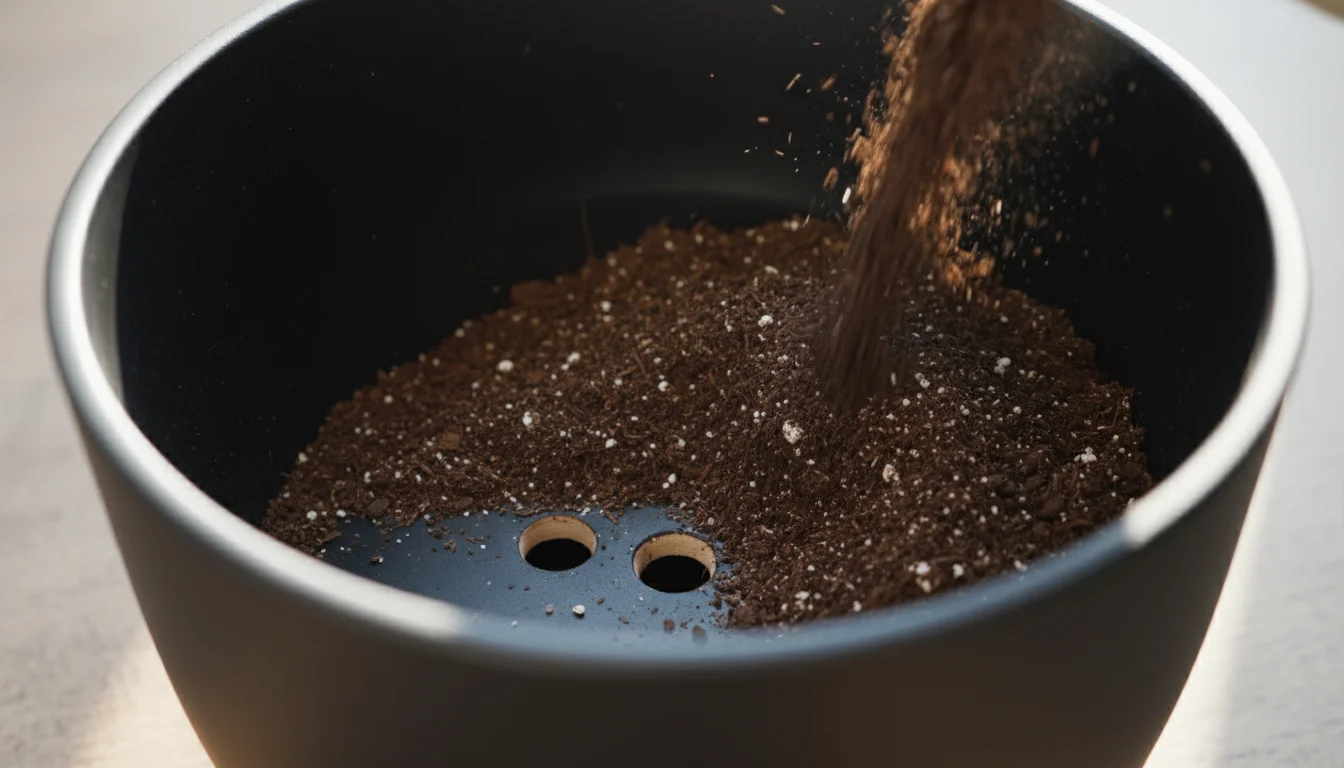
Drainage is Key
Regardless of the container material, you must ensure adequate drainage. Most plants rot in standing water. Choose pots with drainage holes, and if necessary, drill additional ones. Placing a layer of coarse material, like broken pottery shards or gravel, at the bottom of the pot is a common practice, but research indicates that this does not actually improve drainage. Instead, use a high-quality, well-draining potting mix that is appropriate for your plants. You ensure plant health and longevity by providing proper drainage.
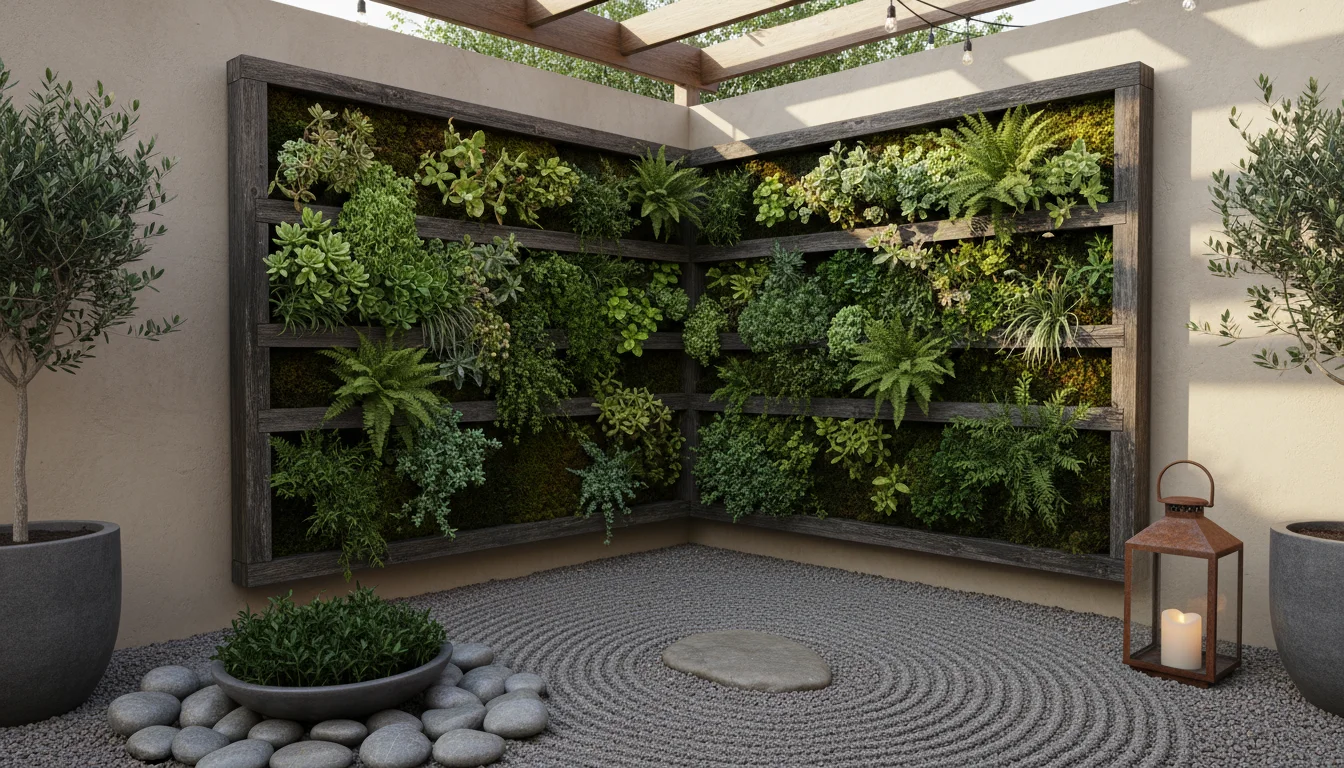
Crafting Visual Depth with Verticality
In small spaces, you expand your garden upwards. Vertical elements draw the eye, create a sense of enclosure, and significantly increase your planting area. This approach is essential for a rich small backyard zen garden.
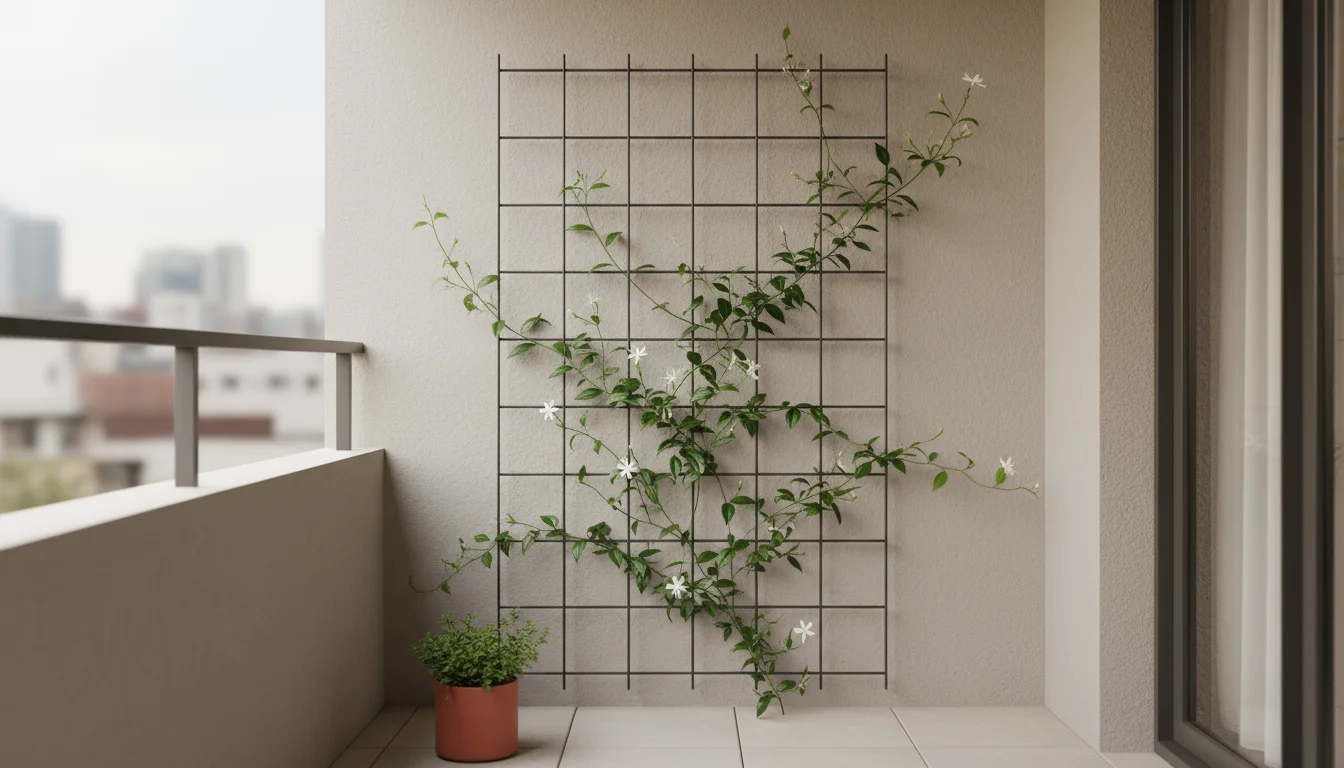
Trellises and Arbors
You install trellises against walls or fences for climbing plants. Choose simple, natural materials like bamboo, untreated wood, or dark metal. A climbing vine, such as a subtle jasmine or a small-leaved ivy, softens hard surfaces and adds greenery without taking up precious floor space. An arbor, even a miniature one over a small bench, creates an intimate, secluded feel and provides another opportunity for vertical planting. You choose lightweight structures that do not visually overpower your compact area.
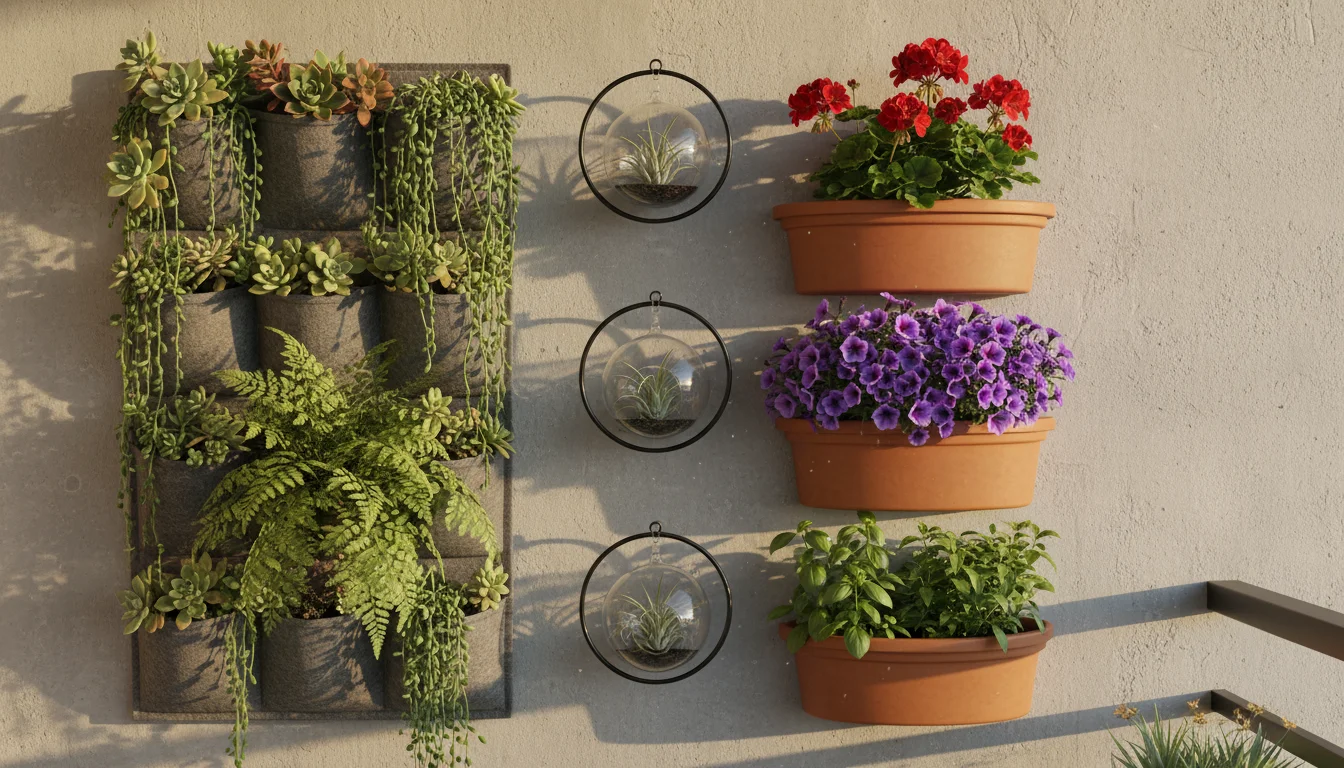
Wall Planters and Shelves
Wall-mounted planters or shelves are excellent for displaying smaller plants, moss, or decorative objects. You can create a living wall effect with multiple small pockets, filling them with succulents, ferns, or herbs. Shelves allow you to layer elements, placing tiny pots or stones at different heights. This technique creates a dynamic visual display. You select wall planters that are easy to water and maintain. Consider a drip irrigation system for vertical gardens to simplify maintenance, especially for plants needing consistent moisture.
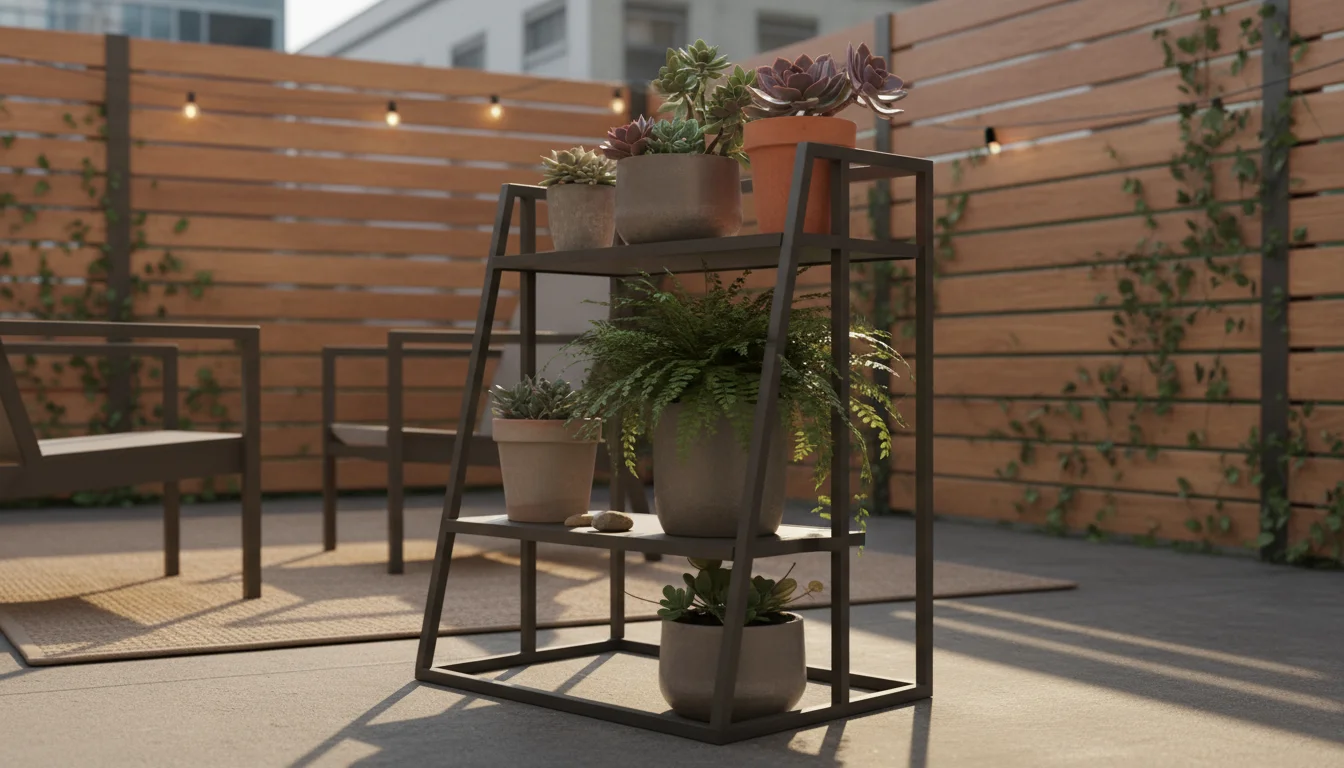
Tiered Stands and Plant Ladders
Tiered plant stands or plant ladders allow you to arrange multiple containers vertically, creating a tiered display. This is perfect for showcasing a collection of small plants or creating a focal point with varied heights. You select sturdy stands made from materials that complement your Zen aesthetic, such as bamboo, dark metal, or natural wood. These structures help you achieve visual depth and layered greenery without occupying a large footprint on your patio or balcony. You use these to group plants that share similar light and water requirements, simplifying their care.
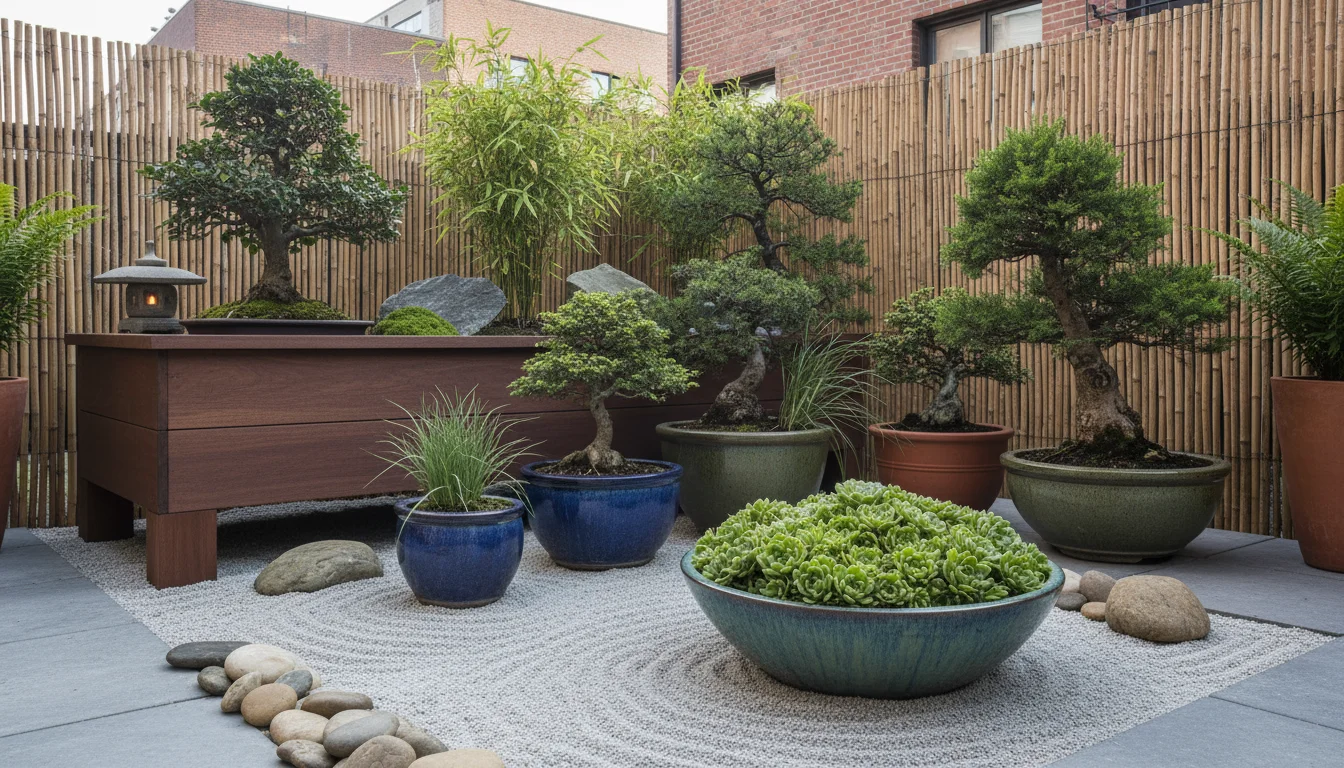
Height Transitions
You create natural transitions in height, guiding the eye smoothly from low ground covers to taller plants and vertical structures. This layered approach adds interest and a sense of completeness. Place taller elements towards the back or sides of your space, with mid-height plants in the middle, and low-growing ground covers or raked gravel in the foreground. This technique mimics natural landscapes and makes your small space feel larger and more immersive.
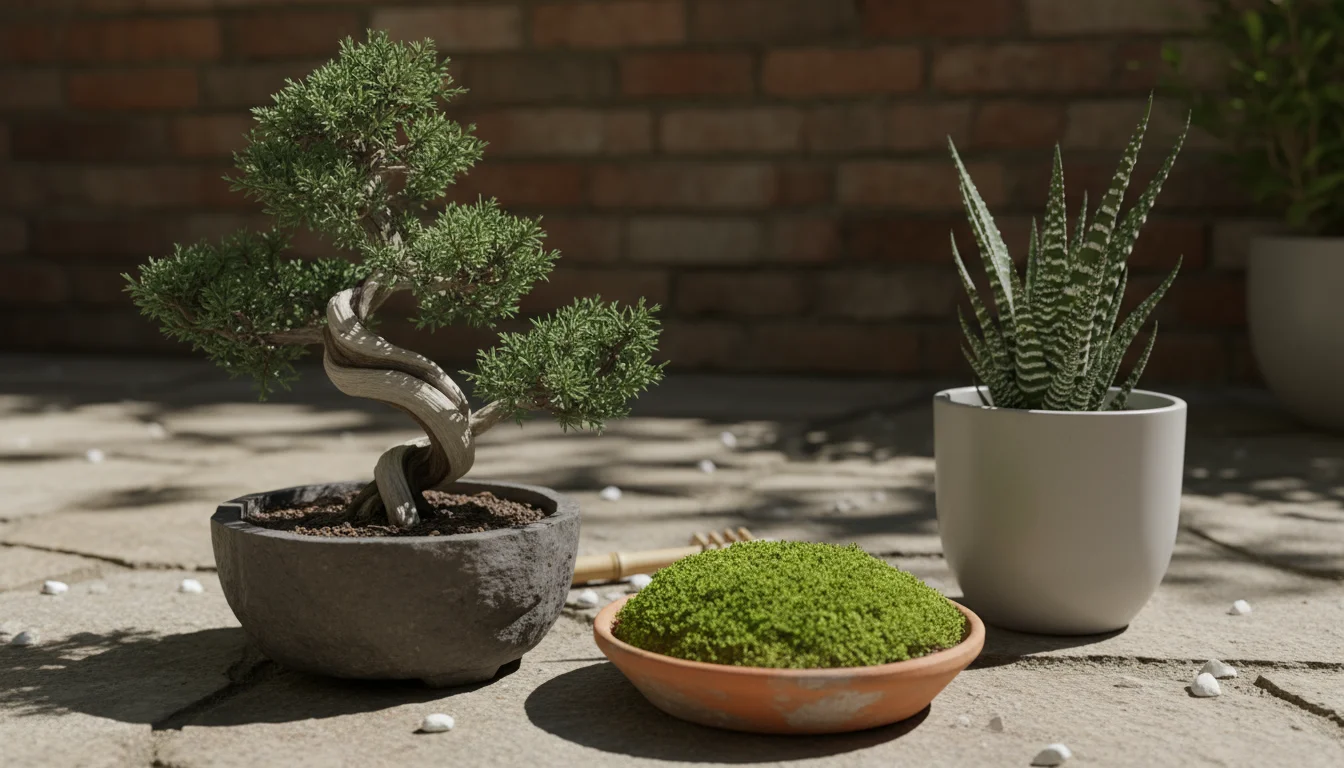
Selecting Your Tranquil Plant Palette
Plant selection for a Zen garden prioritizes texture, form, and subtle color over flashy blooms. You choose plants that contribute to a calm atmosphere, require low maintenance, and thrive in your specific microclimate. Remember, sustainability is key, so you opt for peat-free mixes and water-wise choices.
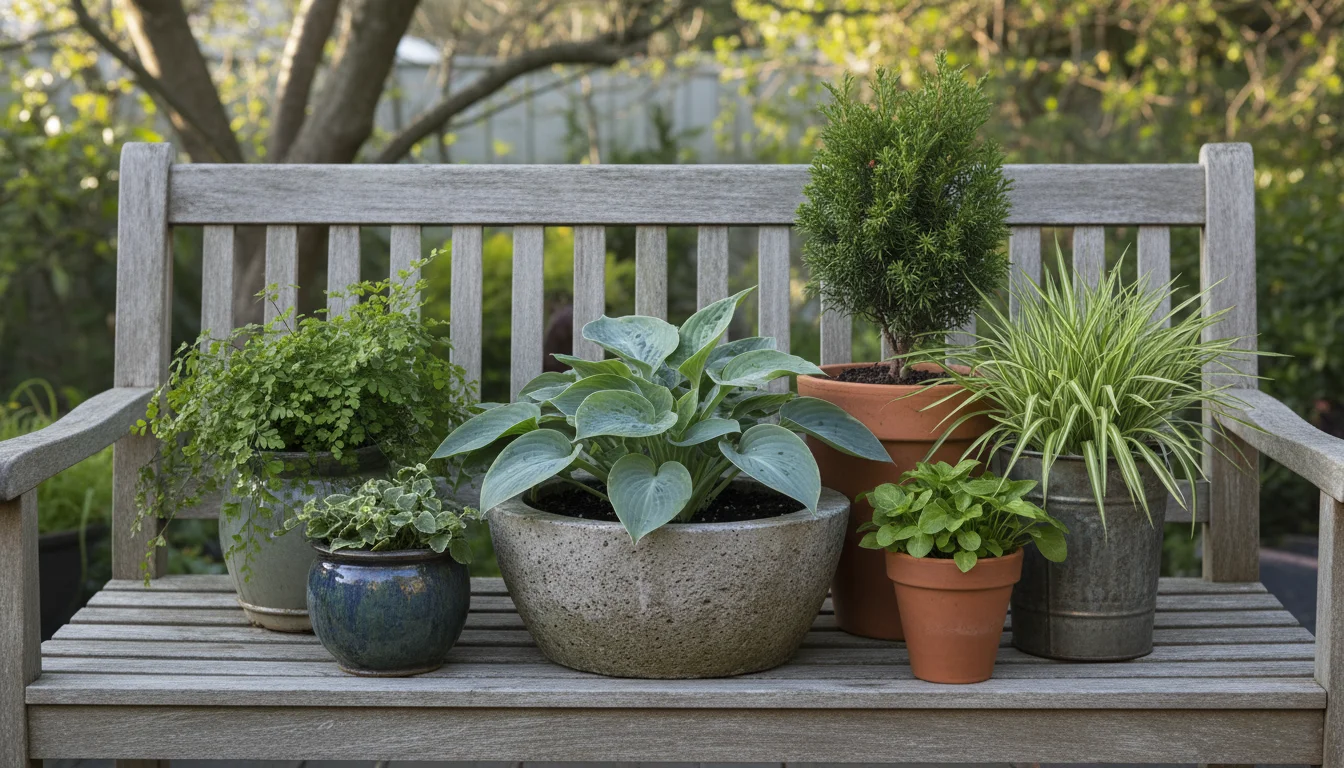
Foliage Focus: Texture and Form
You emphasize foliage rather than flowers. Look for plants with interesting leaf shapes, textures, and varied shades of green. Consider plants with fine, delicate leaves contrasted with broad, sculptural ones. Examples include ferns (Maidenhair fern, Japanese painted fern), hostas (smaller varieties), dwarf conifers (Dwarf Japanese Garden Juniper, Hinoki cypress), and sedges. These plants provide year-round interest and a sense of enduring natural beauty. You use foliage to create depth and contrast, much like an artist uses different shades of paint.
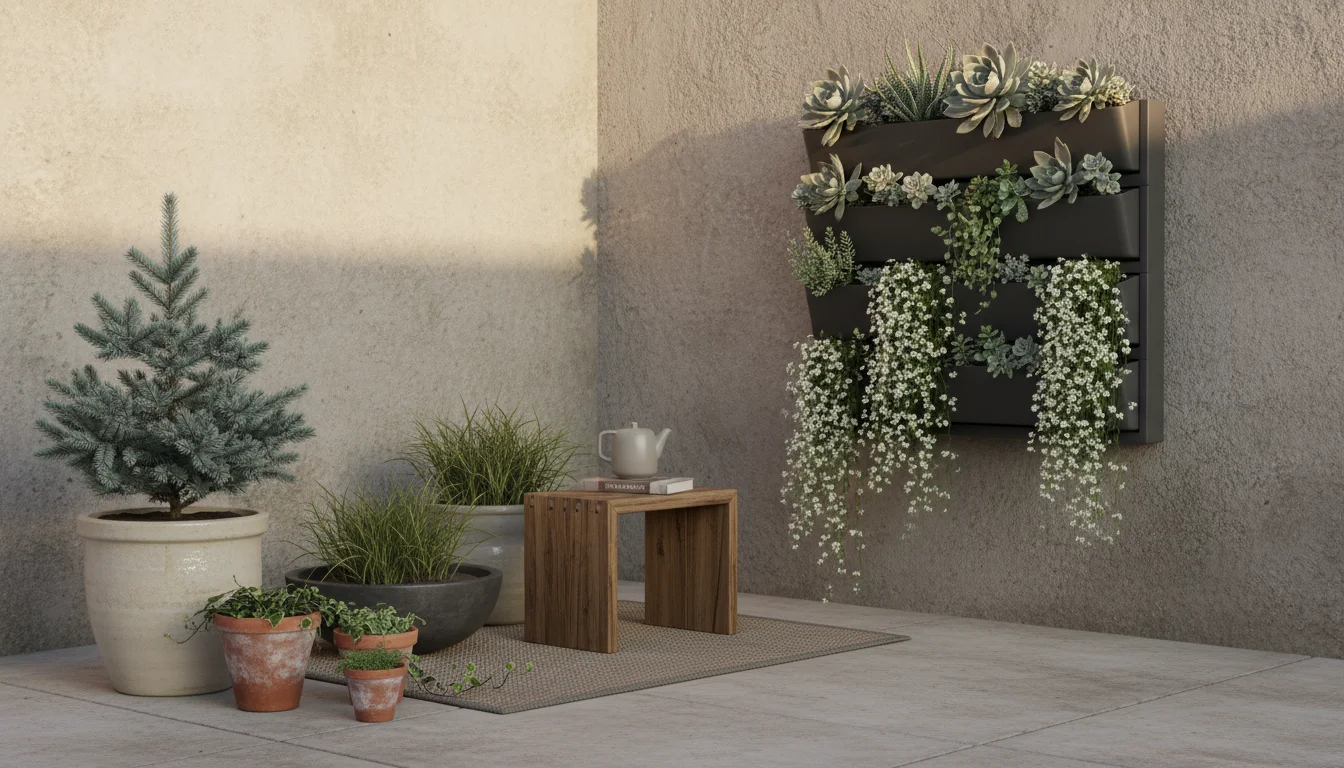
Subtle Color and Seasonal Interest
You stick to a restrained color palette. Greens, grays, whites, and subtle purples or blues work best. Avoid bright, aggressive colors that detract from tranquility. While foliage is primary, you can introduce plants with delicate, understated blooms that appear seasonally. Consider plants like miniature astilbe, creeping thyme with tiny flowers, or small varieties of camellia for a touch of seasonal charm. These provide gentle pops of color without overwhelming the serene environment. You also consider plants that offer textural interest in winter, such as evergreens, to ensure year-round appeal.
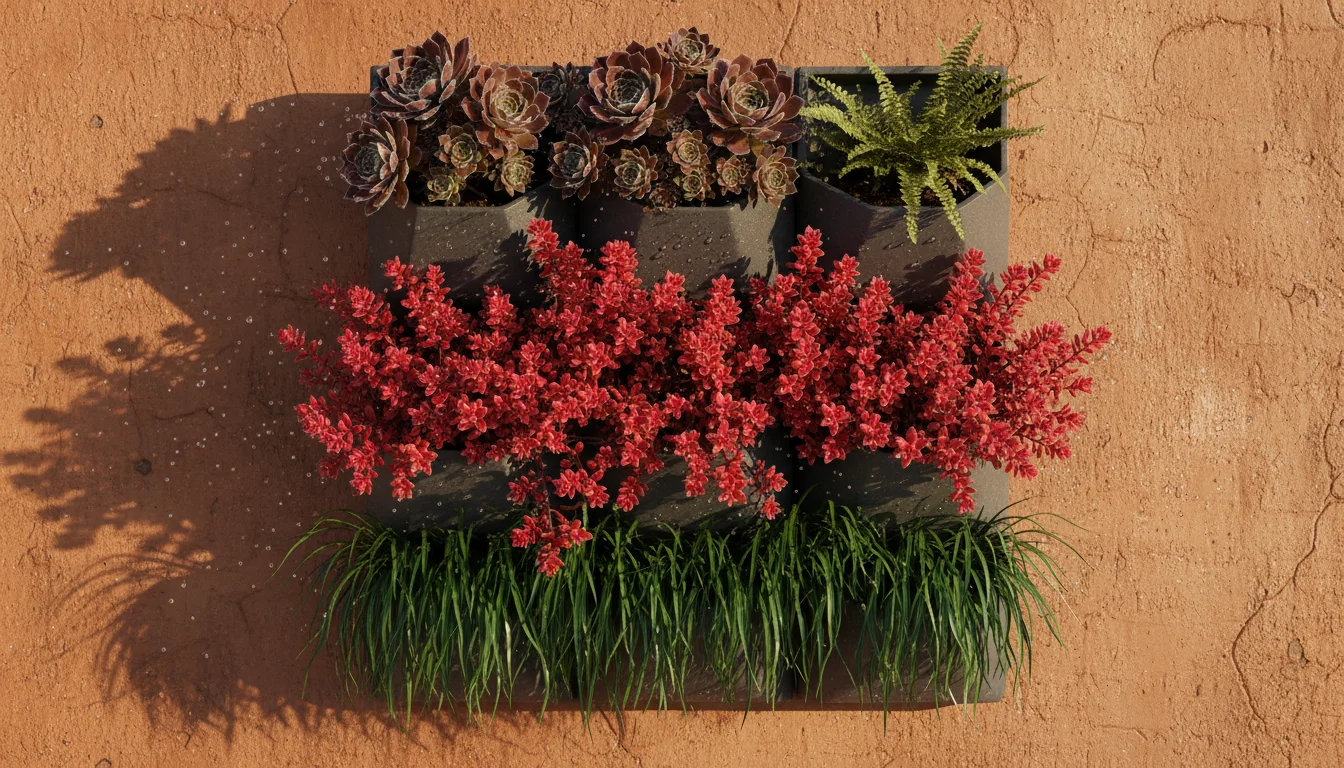
Low-Maintenance and Water-Wise Choices
You select plants known for their resilience and minimal care requirements. Drought-tolerant succulents, sedums, specific grasses (e.g., mondo grass), and hardy ferns are excellent choices. This aligns with the low-maintenance ethos of Zen gardens. You research plants suitable for your USDA plant hardiness zone and specific growing conditions (sunlight, shade, humidity). Consider native plants that naturally thrive in your area and require less water and intervention. For water conservation, consider plants that have low to moderate water needs, such as various sedums, sempervivums, and certain ornamental grasses. More information on water-wise gardening is available from resources like the EPA WaterSense program.
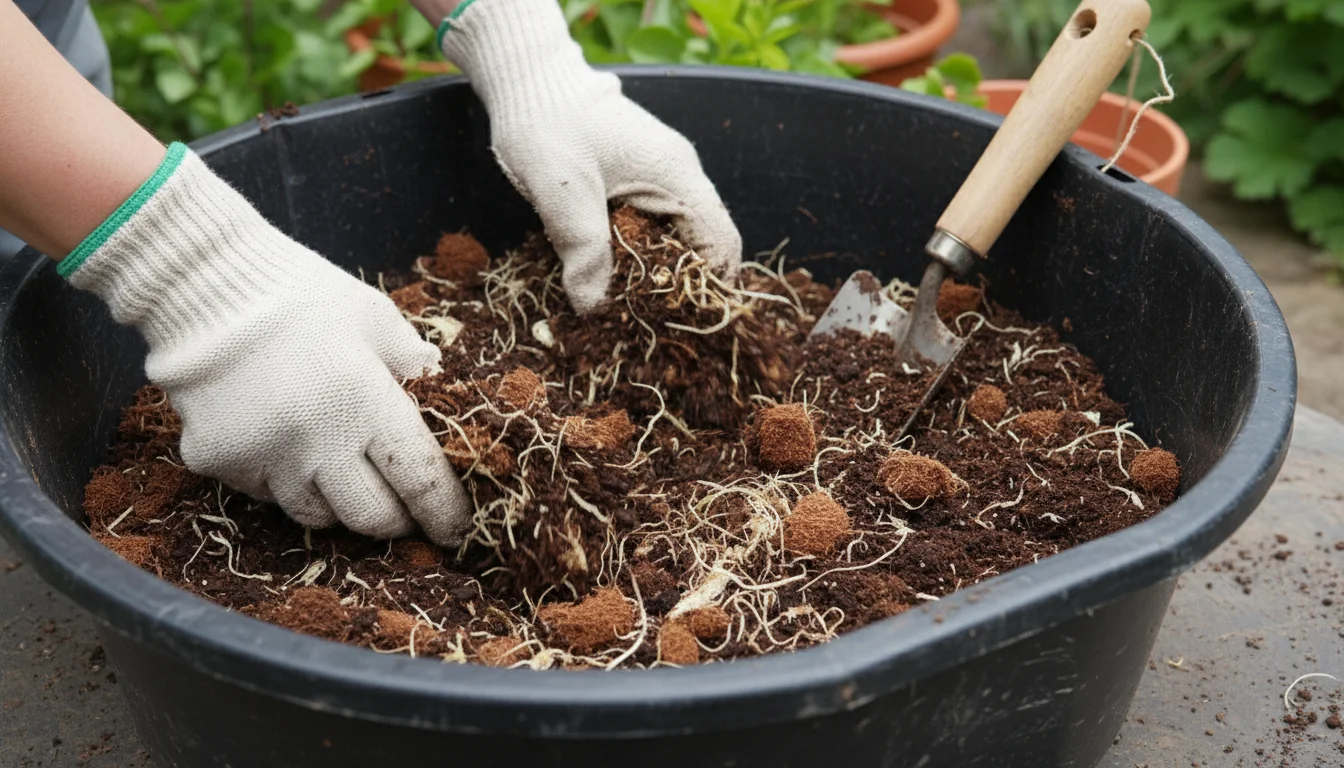
Peat-Free Potting Mixes
You choose peat-free potting mixes for your containers. Peat harvesting is environmentally damaging, contributing to carbon emissions and habitat destruction. Sustainable alternatives, such as coir, compost, and aged wood fibers, perform just as well. You ensure the mix provides good drainage and nutrients for your specific plant selections. This choice reflects an environmentally conscious approach to gardening.
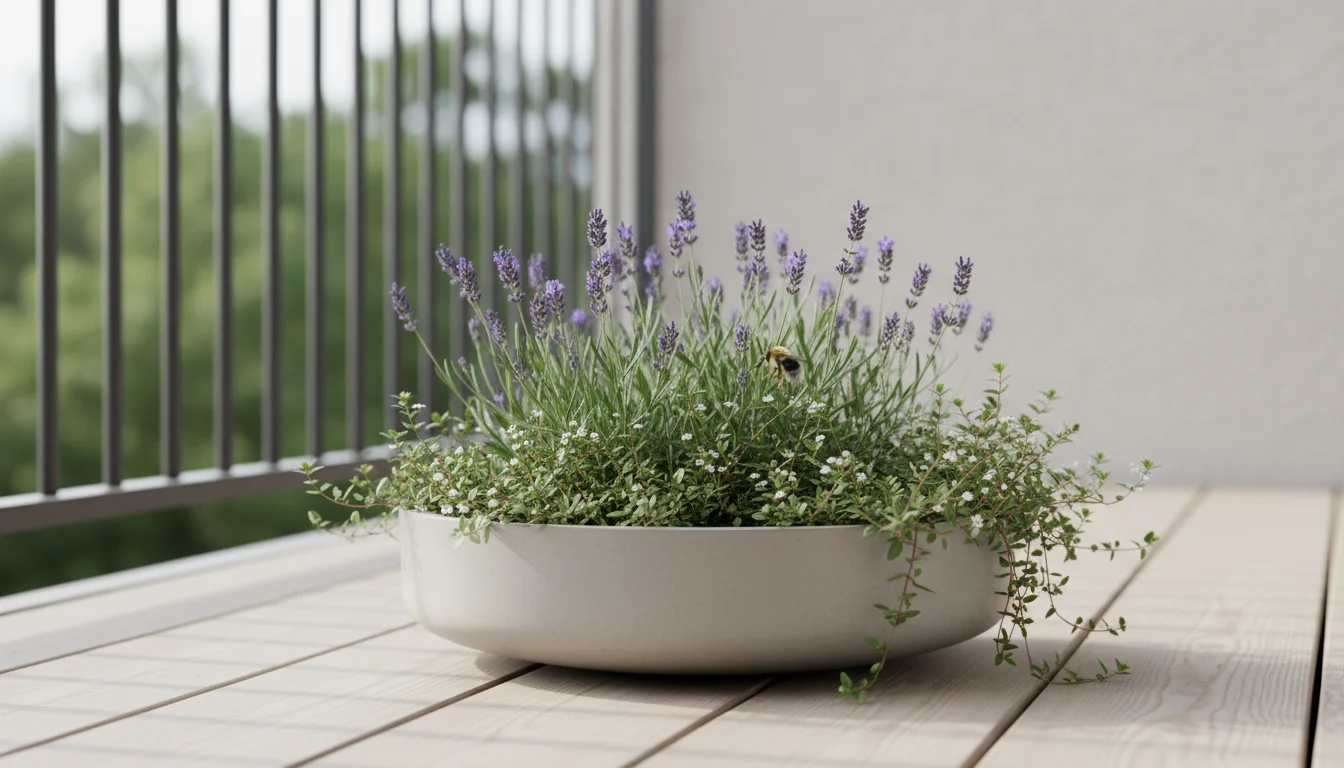
Pollinator-Friendly Options (Subtle)
Even in a Zen garden, you can support local ecosystems. Select plants that attract pollinators without creating a busy, distracting atmosphere. Examples include small varieties of lavender, creeping thyme, or specific native ground covers that produce subtle flowers. These plants introduce gentle life and a quiet hum to your garden, enhancing the naturalness without detracting from the calm. You integrate these choices thoughtfully, ensuring they fit the overall serene aesthetic.
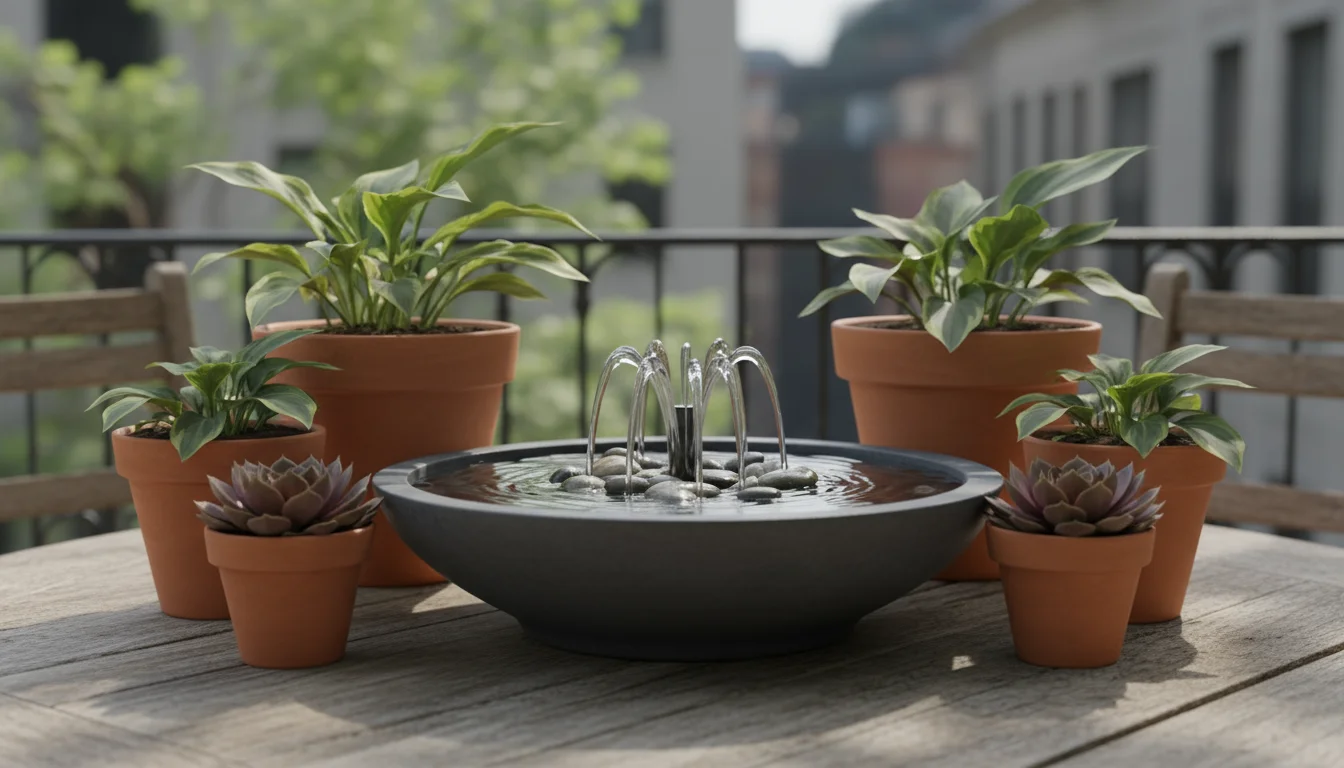
Bringing in Soothing Water Features
The sound of water instantly calms the mind, making a water feature an invaluable addition to your small Zen garden. You do not need a large pond to achieve this effect; many compact options exist.
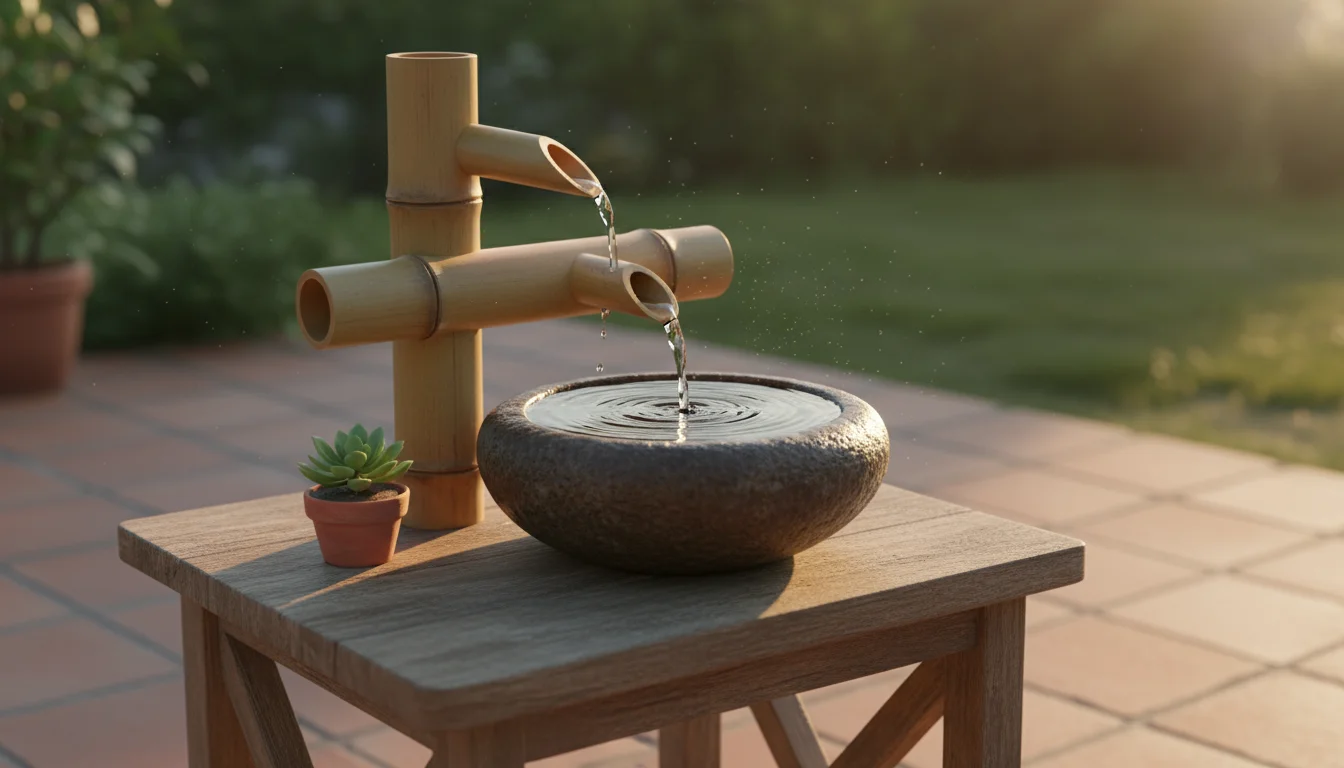
Tabletop Fountains
For the smallest spaces, a tabletop fountain provides the tranquil sound of trickling water. You choose a design that is simple and made from natural materials like ceramic, stone, or bamboo. These fountains are self-contained and easy to set up, requiring only a power source for the pump. You place it on a small table, a low pedestal, or directly on the ground in a designated contemplation zone. The subtle gurgle creates an immediate sense of peace.
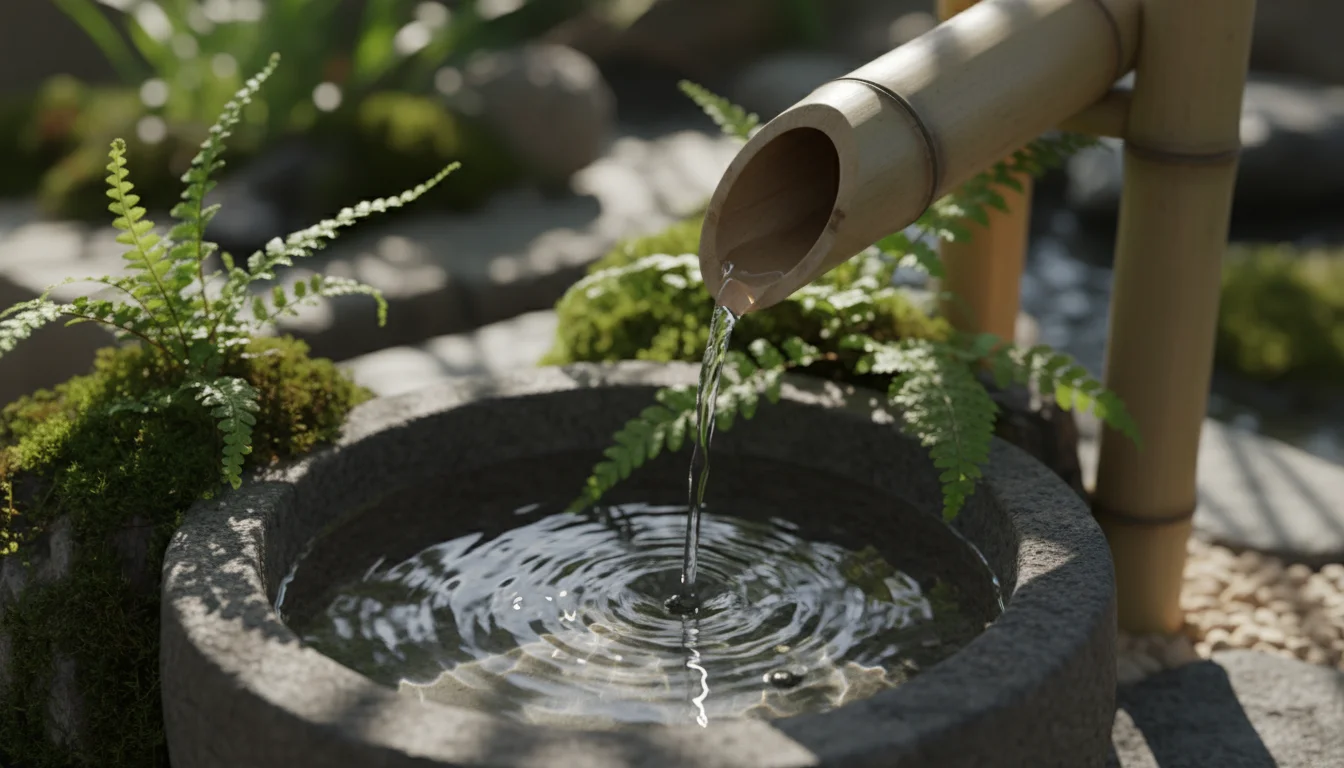
Bamboo Spouts (Shishi-Odoshi)
A miniature shishi-odoshi, a traditional Japanese bamboo water feature, can be adapted for small spaces. This feature involves a bamboo arm that slowly fills with water, then tips over to empty, creating a gentle clacking sound as it resets. You can find compact versions designed for containers or small basins. The rhythmic sound and movement are deeply meditative and bring an authentic Zen element to your garden. Ensure the water collects in a leak-proof basin beneath the spout to recycle it.
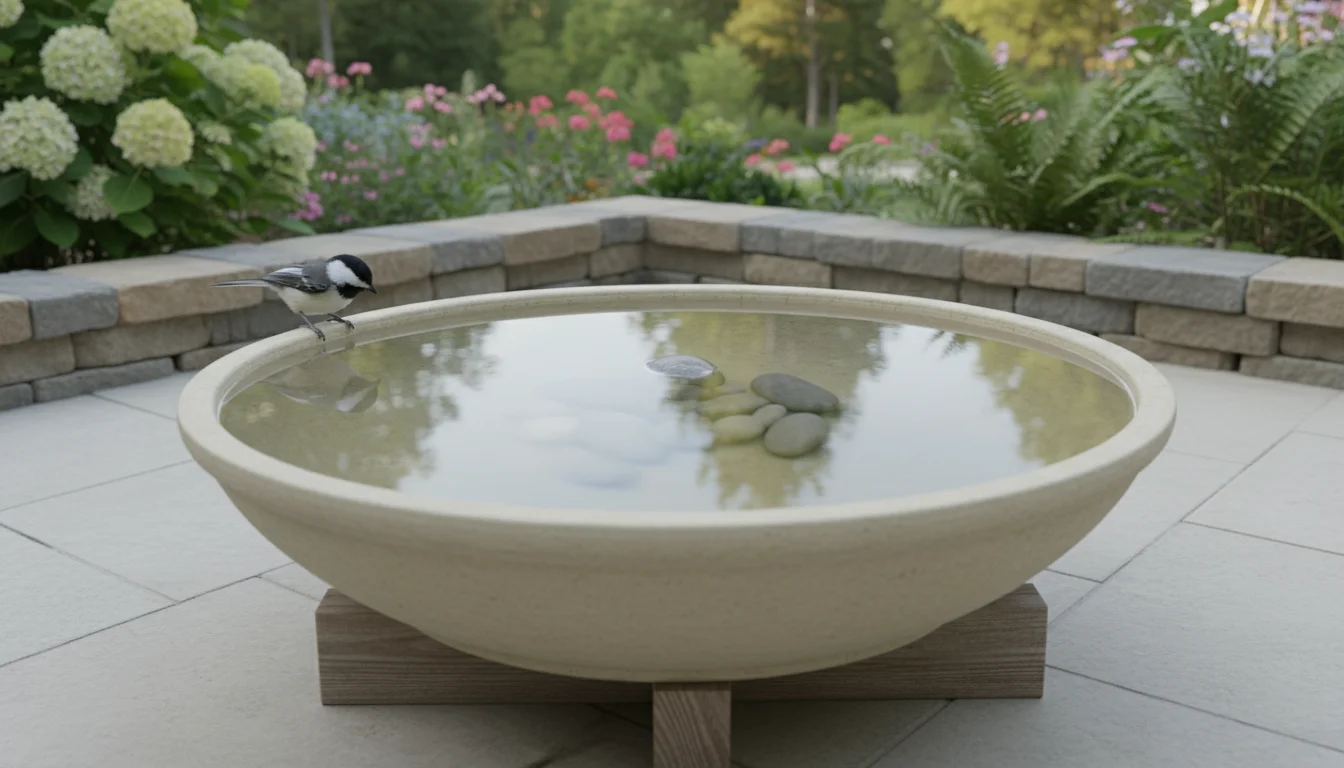
Bird Baths or Basins
A simple, shallow bird bath or a flat, wide basin filled with water offers a reflective surface and attracts local birds, adding subtle life and sound. You choose an understated design in stone or ceramic. The still water creates a mirror effect, reflecting the sky and surrounding plants, which adds visual depth. You place a few smooth river stones in the basin for visual interest and to provide resting spots for birds. Regular cleaning is necessary to maintain water quality for both aesthetic appeal and wildlife health.
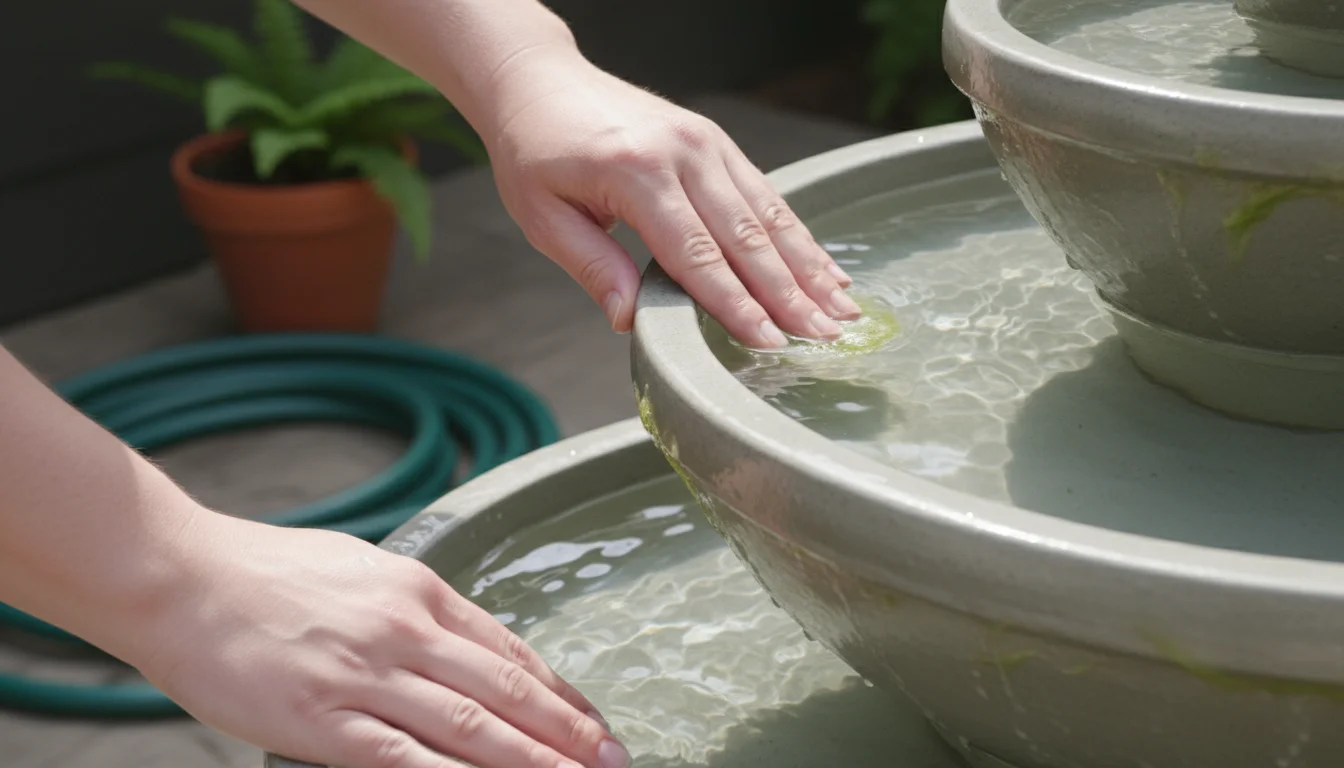
Considerations for Installation and Maintenance
You ensure any electrical water feature uses an outdoor-rated pump and power cord. You consult an electrician if you need to install new outdoor outlets. For solar-powered options, you ensure the panel receives adequate sunlight throughout the day. You regularly clean your water feature to prevent algae buildup and mosquito breeding. You also check and refill water levels frequently, especially during warm weather, to protect the pump and maintain continuous flow.
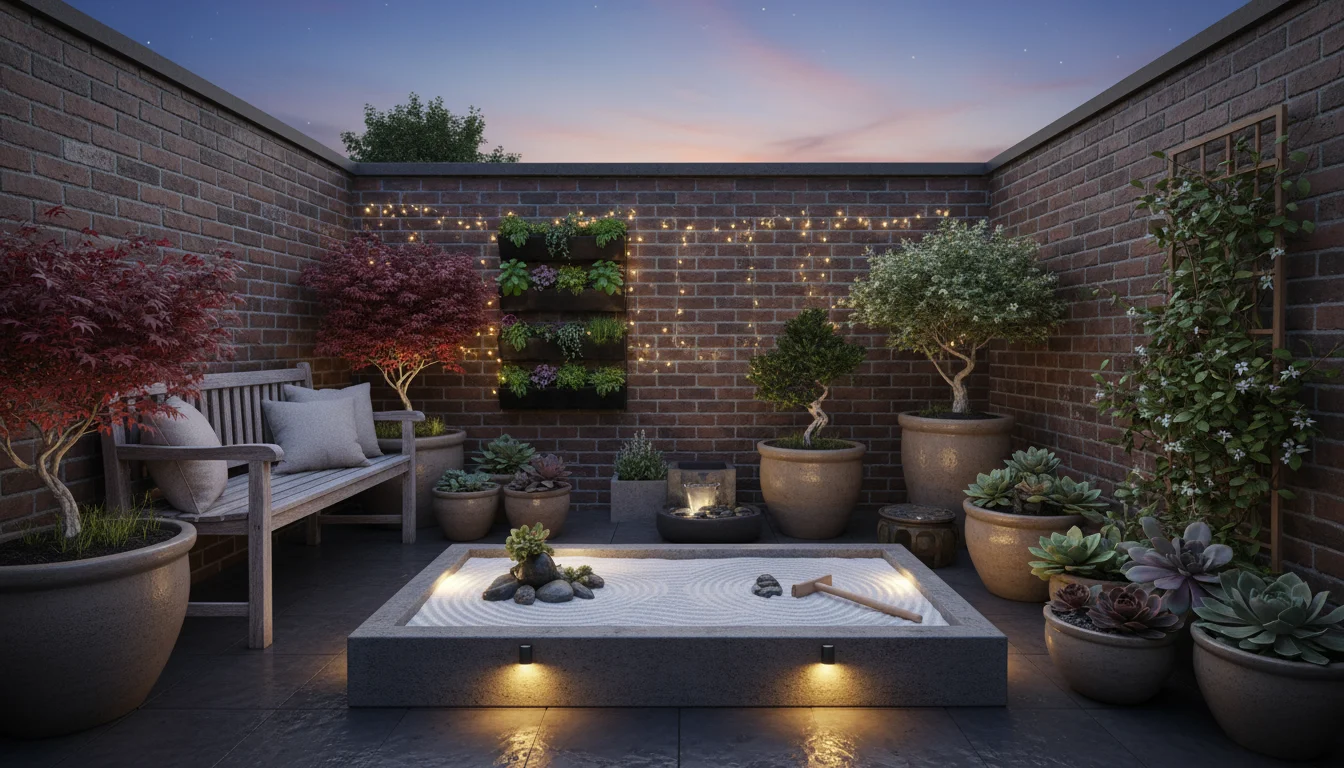
Enhancing Your Space with Mindful Lighting
Thoughtful lighting extends the usability of your Zen garden into the evening hours and creates a magical, contemplative atmosphere. You use lighting to highlight key features and provide subtle illumination, avoiding harsh or overly bright lights.
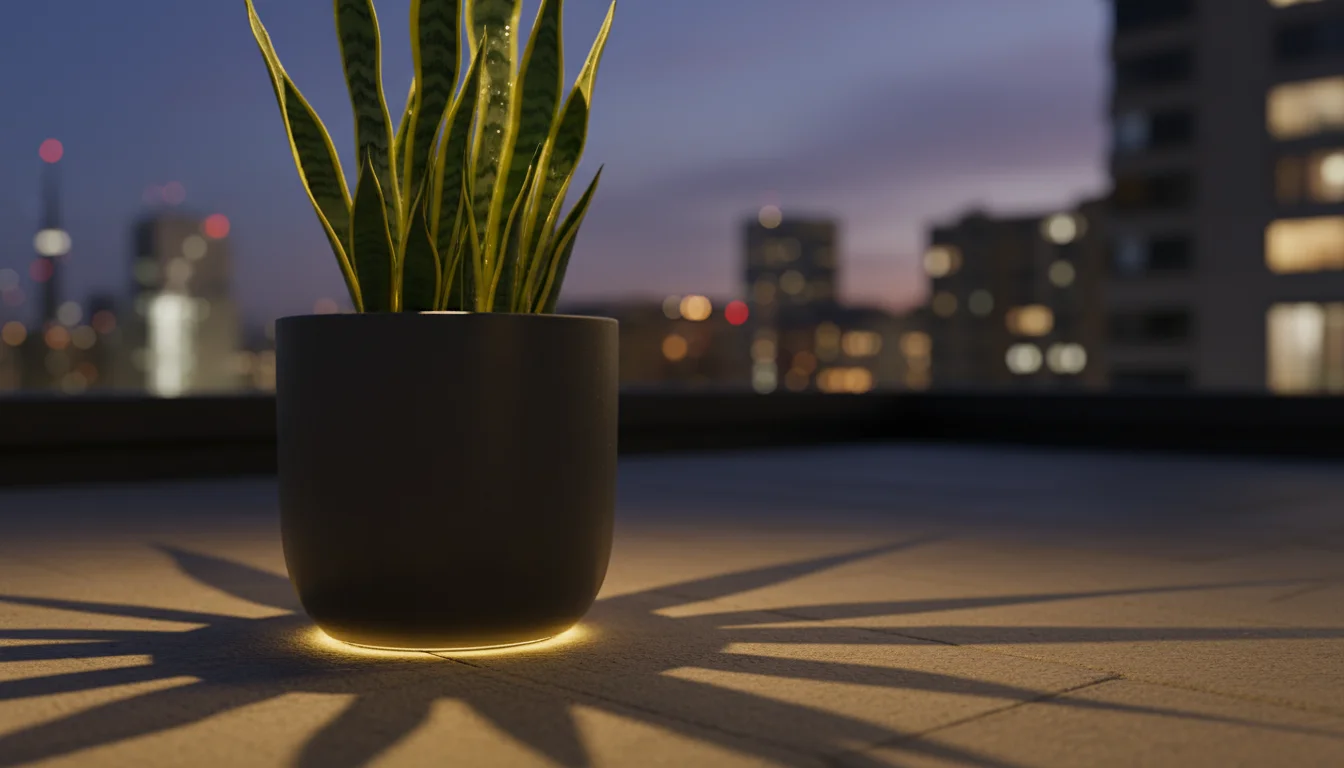
Subtle Accent Lighting
You use low-voltage LED accent lights to spotlight your focal points, such as a prized rock, a sculptural plant, or a small water feature. Strategically placed lights create shadows and depth, enhancing the garden’s drama after dusk. Position lights to graze surfaces, highlighting textures rather than broadly illuminating areas. You aim for a soft, warm glow that encourages relaxation and reflection. Avoid directing lights directly at seating areas, which can cause glare.
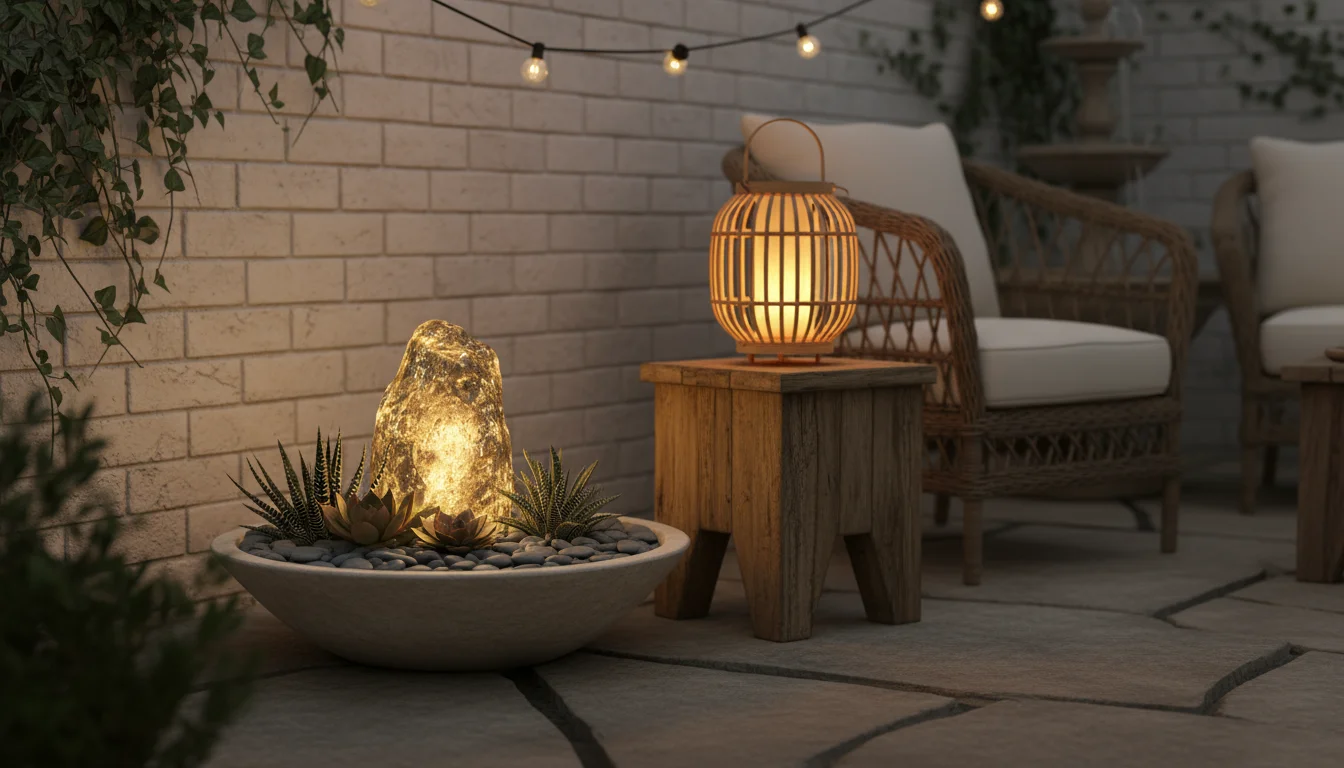
Solar-Powered Stakes and Lanterns
Solar-powered garden stakes or lanterns offer an easy, energy-efficient lighting solution. You place them along a path or subtly within planting beds to provide gentle ambient light. Choose designs that are simple and blend with your Zen aesthetic, such as bamboo-look lanterns or understated stone-like fixtures. Ensure the solar panels receive direct sunlight for optimal charging throughout the day. These lights provide a soft glow without the need for complex wiring.
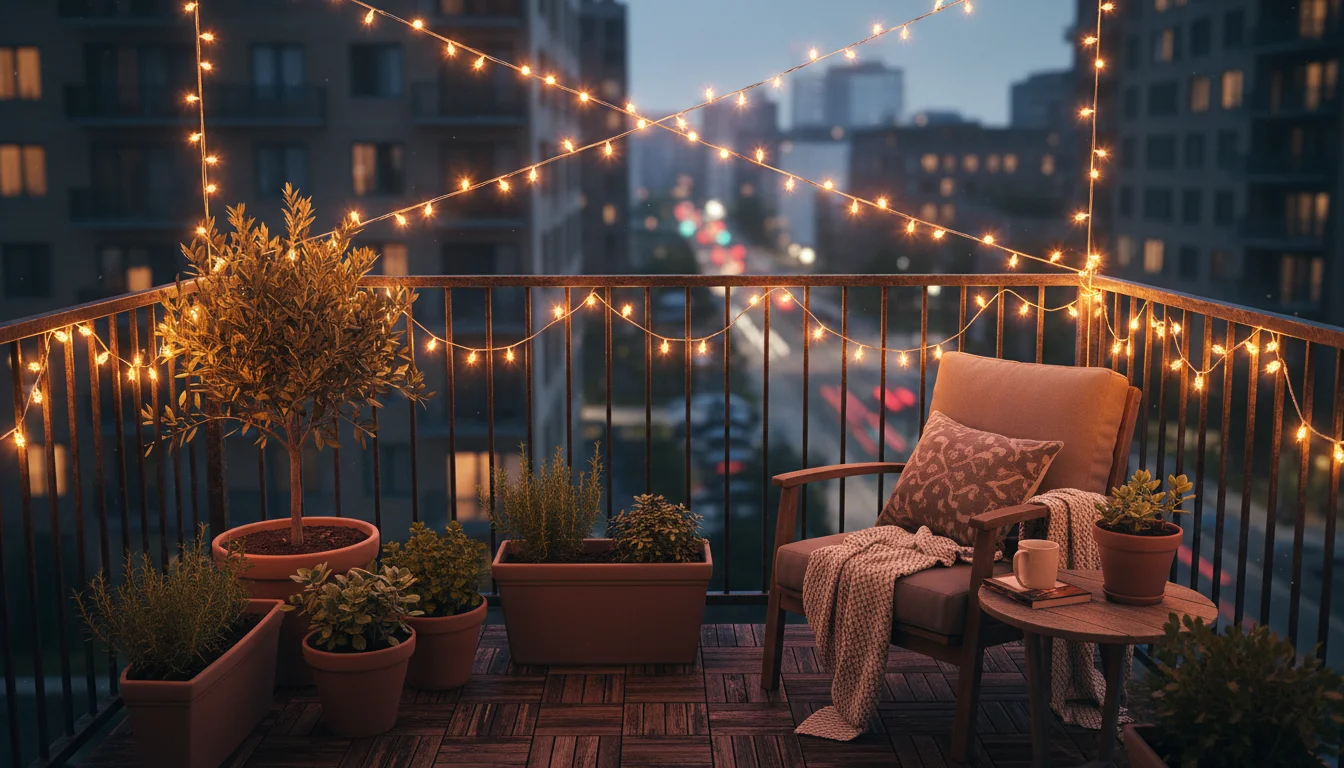
String Lights for Ambiance
For a cozy, intimate feel, you can drape weatherproof LED string lights across a small pergola, along a railing, or suspended overhead. Choose warm white or amber lights to create a soft, inviting glow. Avoid flashing or brightly colored lights, which would disrupt the serene atmosphere. You use string lights to define the boundaries of your outdoor room and create a sense of enclosure and warmth. Ensure all outdoor lighting is rated for exterior use to prevent electrical hazards and ensure safety. You consult local regulations regarding outdoor lighting, particularly in shared living spaces.
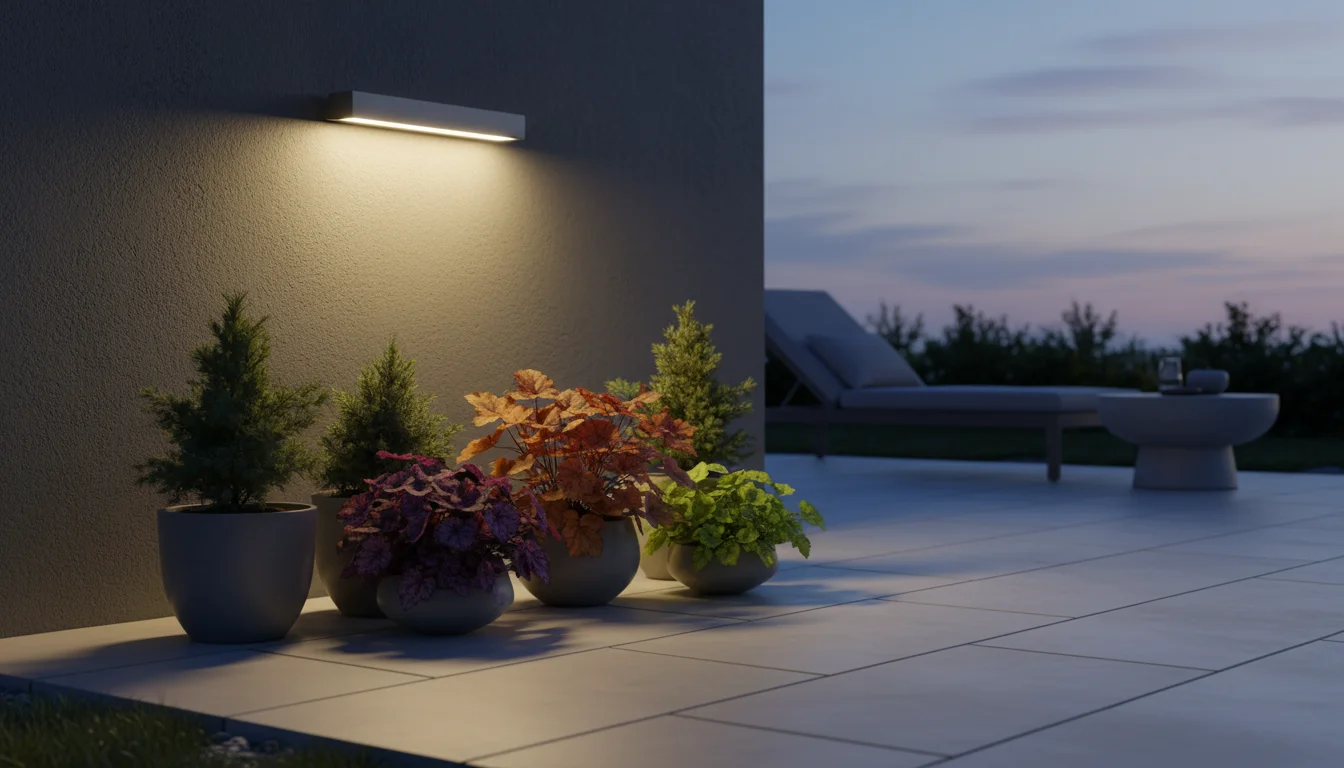
Safety and Glare Control
You ensure all lighting is safely installed, particularly any electrical components. Avoid placing lights where they can cause tripping hazards or obstruct pathways. You manage glare by selecting downward-facing fixtures or using diffusers. The goal is to illuminate your garden subtly, not to overpower it with bright lights. Soft, indirect lighting enhances the tranquil atmosphere, making your garden a truly peaceful haven at any time of day or night.
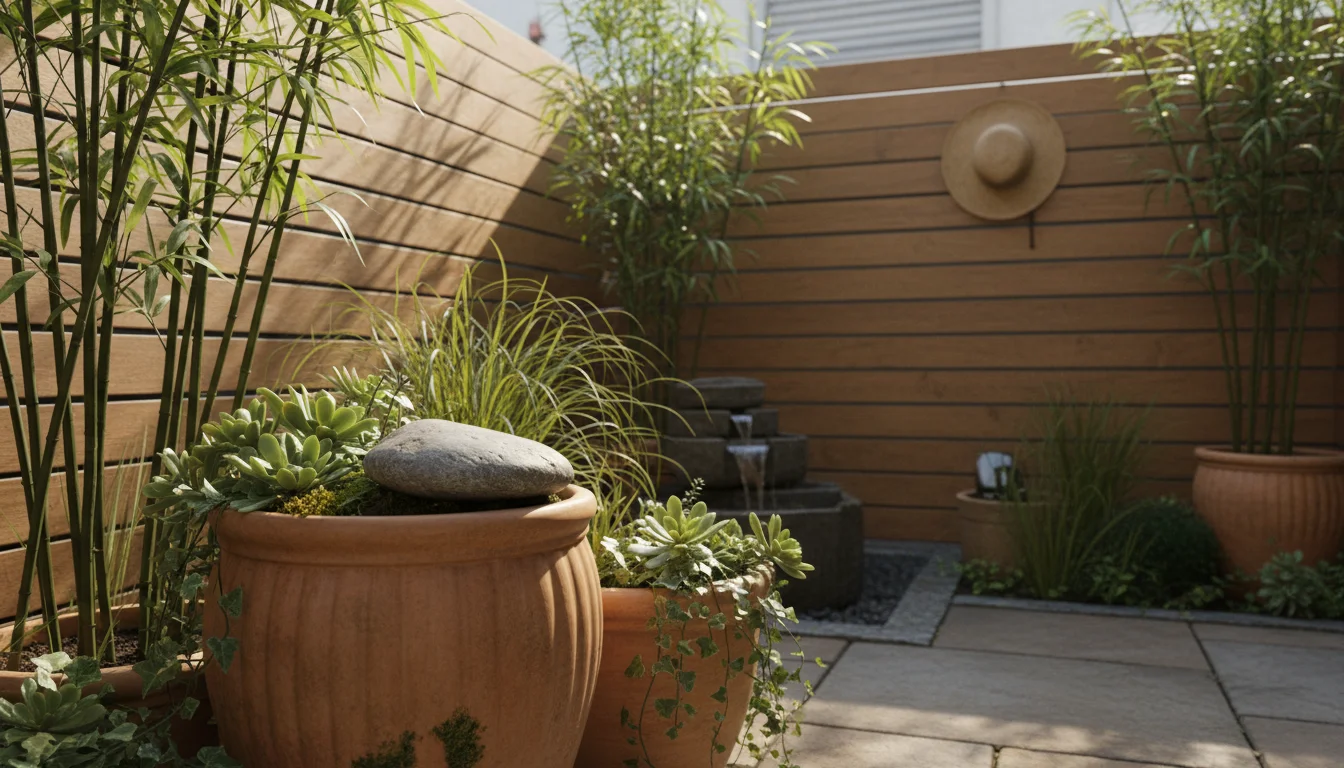
Achieving Privacy and Acoustic Calm
A Zen garden serves as a sanctuary, and part of that serenity comes from a sense of privacy and quiet. In small, often urban spaces, you intentionally design elements to minimize visual distractions and soften ambient noise.
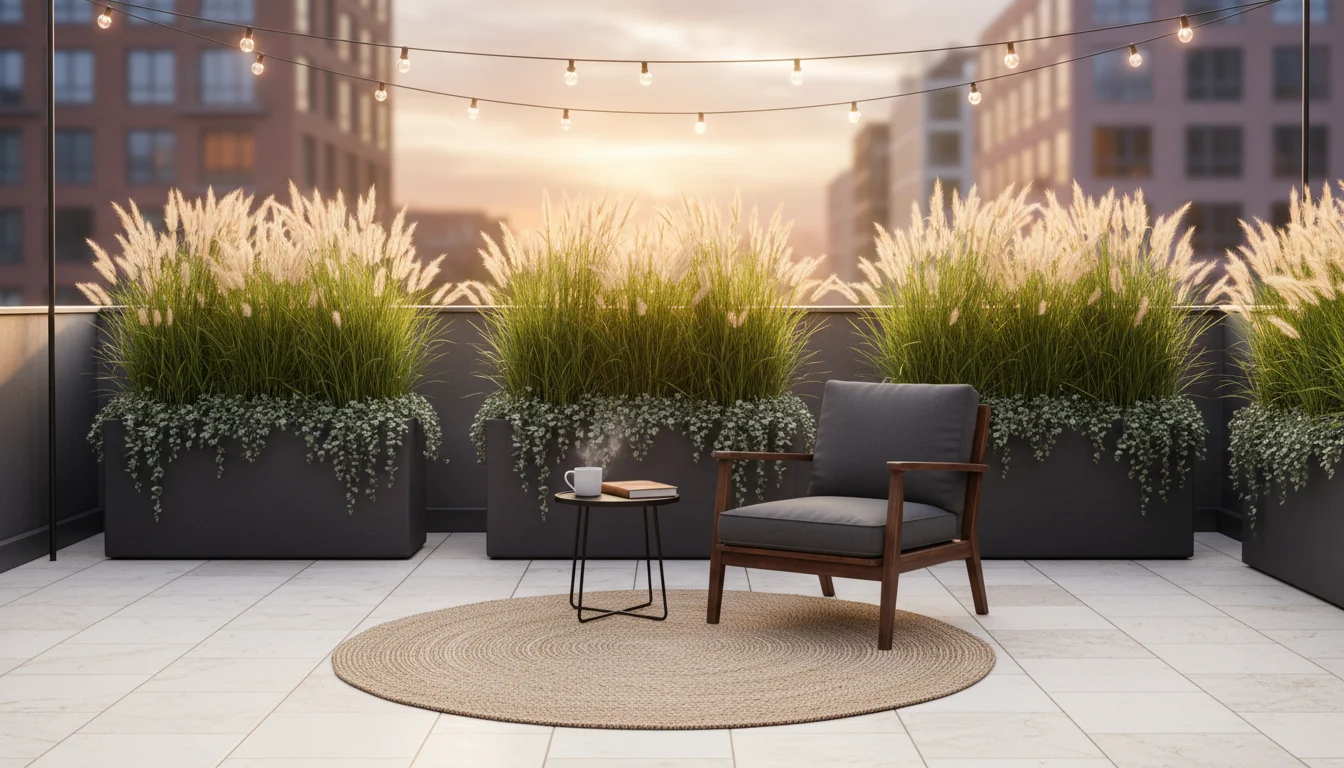
Visual Screening with Plants
You use tall, narrow planters filled with slender, upright plants to create natural screens. Bamboo (clumping varieties, not running ones, to prevent invasive spread), tall ornamental grasses (like Karl Foerster feather reed grass), or columnar evergreens (e.g., Sky Pencil Holly) work well. Position these planters along the perimeter of your space to block unwanted views from neighbors or busy streets. The living screen also adds a lush, green backdrop. You ensure the chosen plants fit your climate and container size to thrive as screens. Visit your local nursery or extension service for regionally appropriate, non-invasive screening plant suggestions.
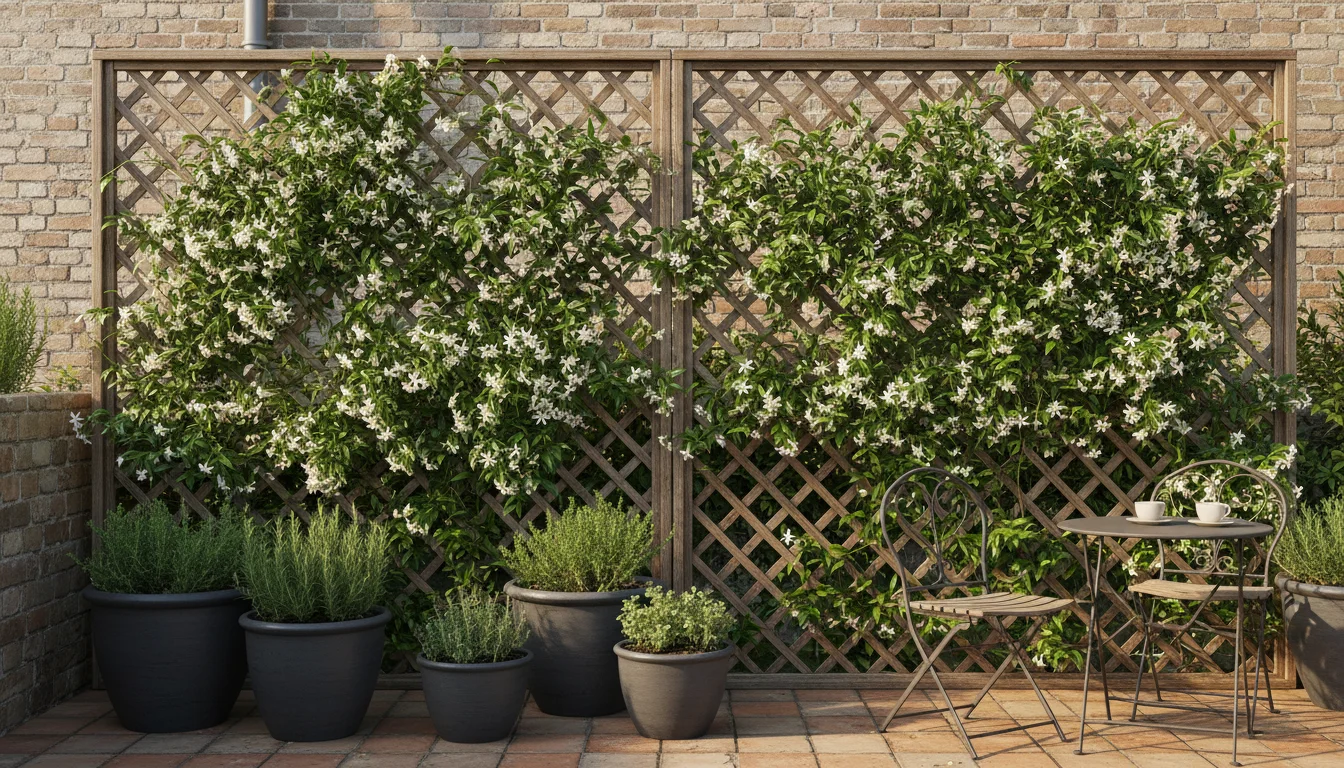
Lattice or Trellis with Vines
You attach a simple wooden or metal lattice to an existing fence or wall. Train climbing vines, such as star jasmine, small-leaved ivy, or clematis, to grow over it. This creates a beautiful, green privacy screen that softens hard architectural lines. The foliage also absorbs some sound, contributing to acoustic calm. You choose vigorous but not overly aggressive climbers, ensuring they do not overwhelm your small space. Regular pruning helps maintain their desired shape and density.
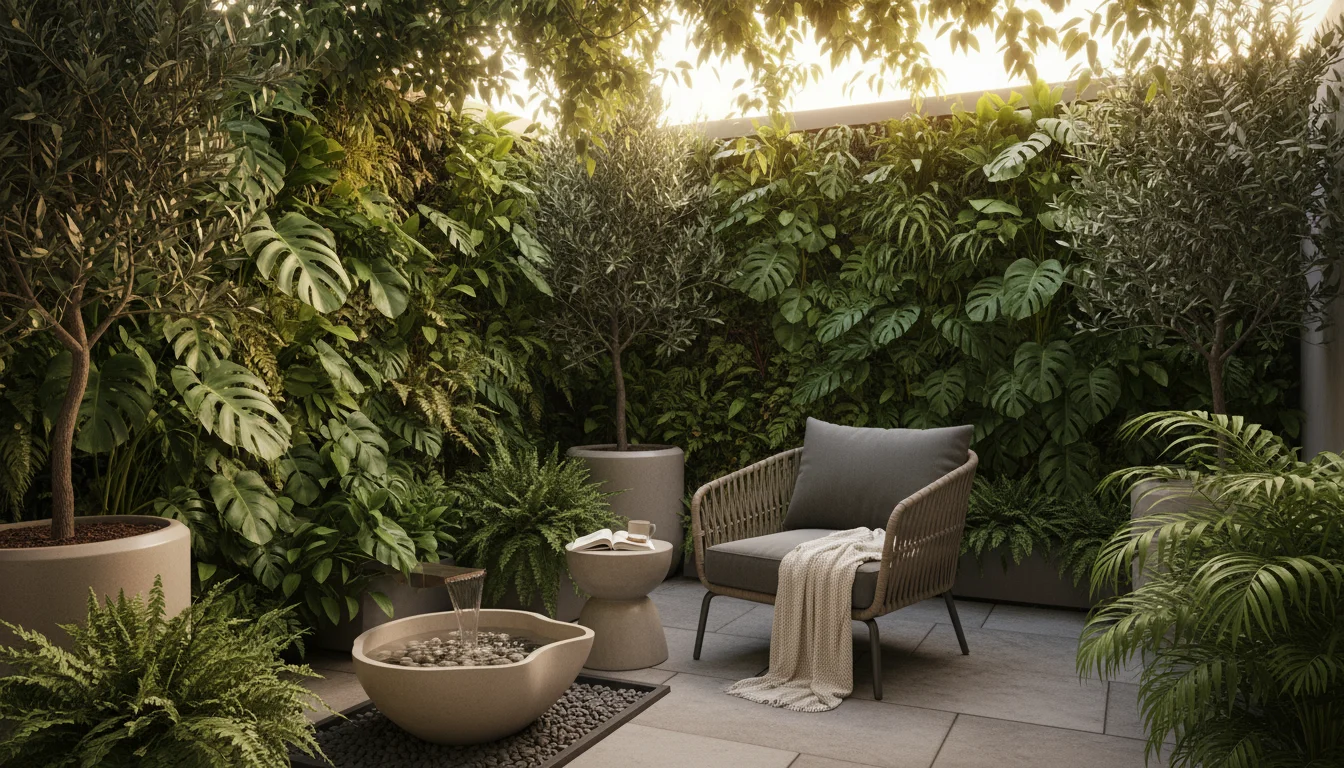
Sound Softening Elements
Hard surfaces reflect sound, amplifying urban noise. You introduce elements that absorb or mask sound. Thick, dense foliage in containers and vertical gardens helps to absorb sound waves. A gently trickling water feature (as discussed earlier) masks unwanted noises with its soothing sounds. Consider adding a small wind chimes with deep, resonant tones rather than high-pitched, tinkling ones. You also place outdoor textiles, such as thick cushions on seating, to absorb sound. These elements combine to create a quieter, more enclosed atmosphere, making your space feel more private and tranquil.
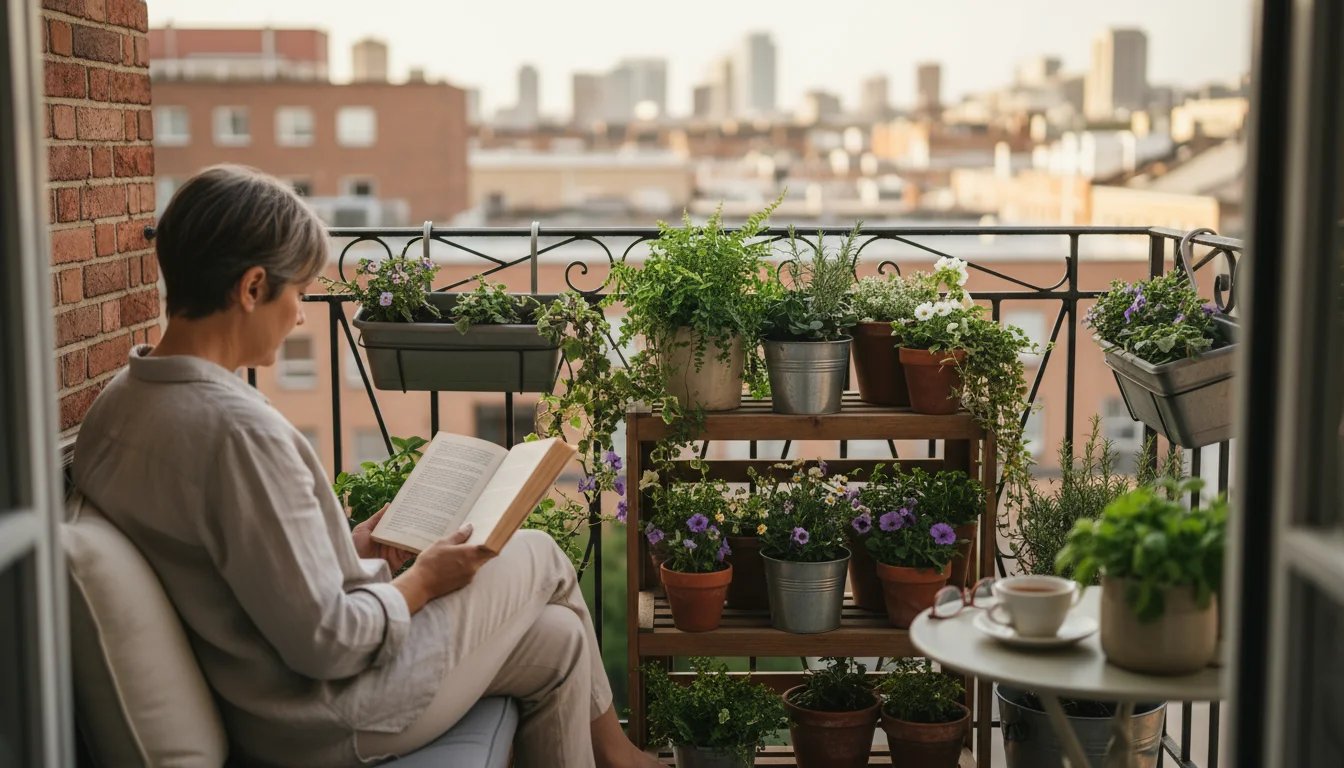
Strategic Placement of Furniture
You position your seating area to face away from potential disturbances, directing your gaze towards the most serene part of your garden. If possible, create a slightly recessed or partially enclosed seating nook using planters or screens. This creates an intimate zone where you feel protected and enveloped by the calming garden elements. You prioritize comfort and a sense of retreat in your furniture placement.
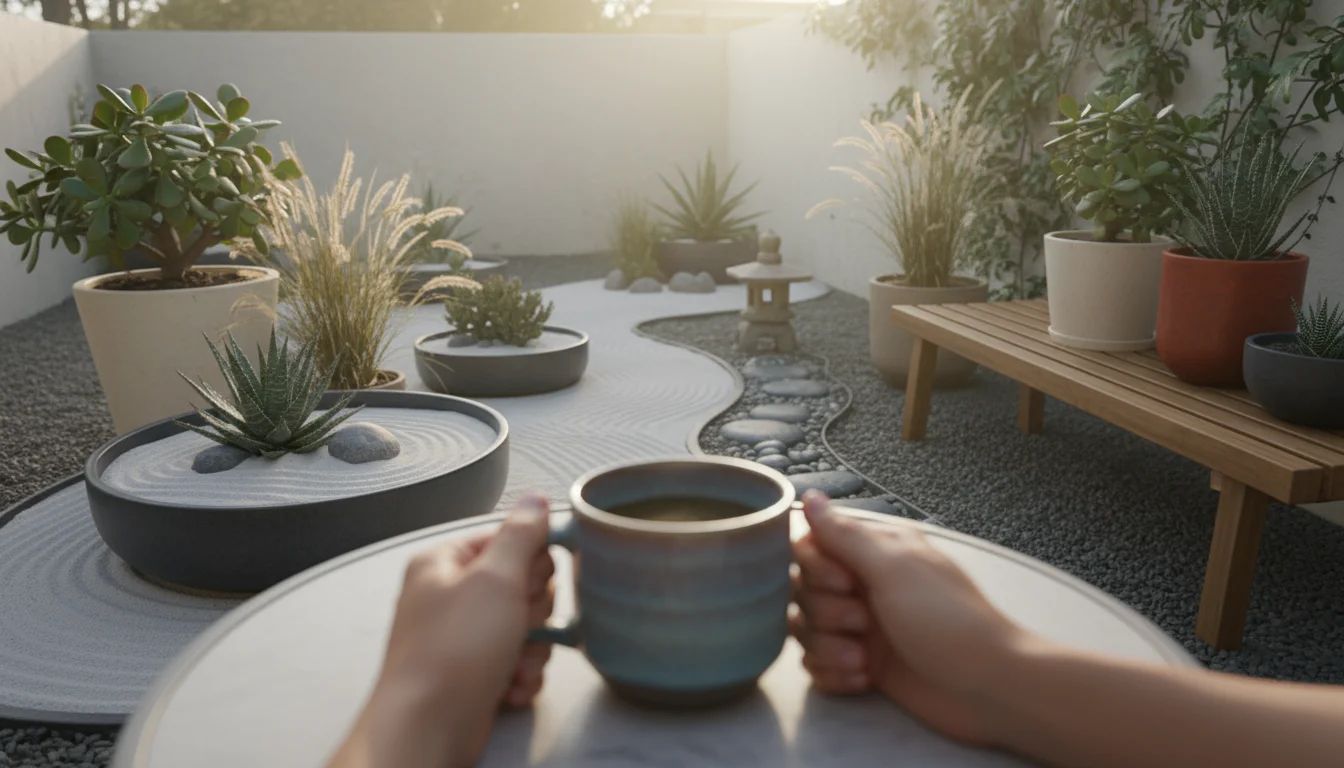
Maintaining Your Serene Small Garden
A Zen garden emphasizes ease and contemplation. This means you design for low maintenance from the outset. Your goal is to spend more time enjoying your garden and less time working in it. Implementing smart maintenance strategies ensures your calming garden ideas remain a source of peace, not stress.
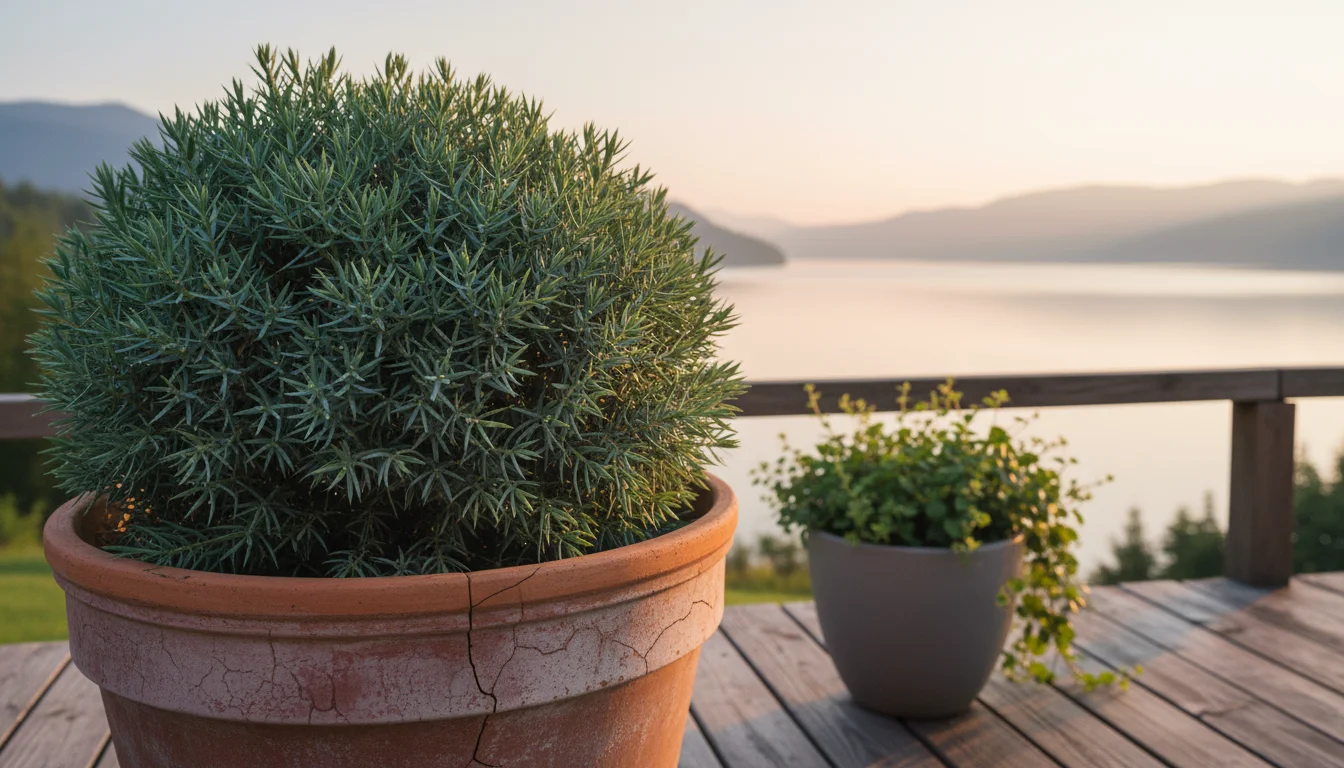
Low-Upkeep Plant Choices
As discussed, you choose plants that naturally require minimal pruning, watering, and pest management. Opt for slow-growing species that maintain their form without constant intervention. For example, dwarf conifers need infrequent shaping, and many succulents thrive on neglect. You avoid plants prone to common pests or diseases, which would necessitate regular chemical treatments or extensive manual removal. Research plant resilience and select varieties known for their hardiness in your climate.
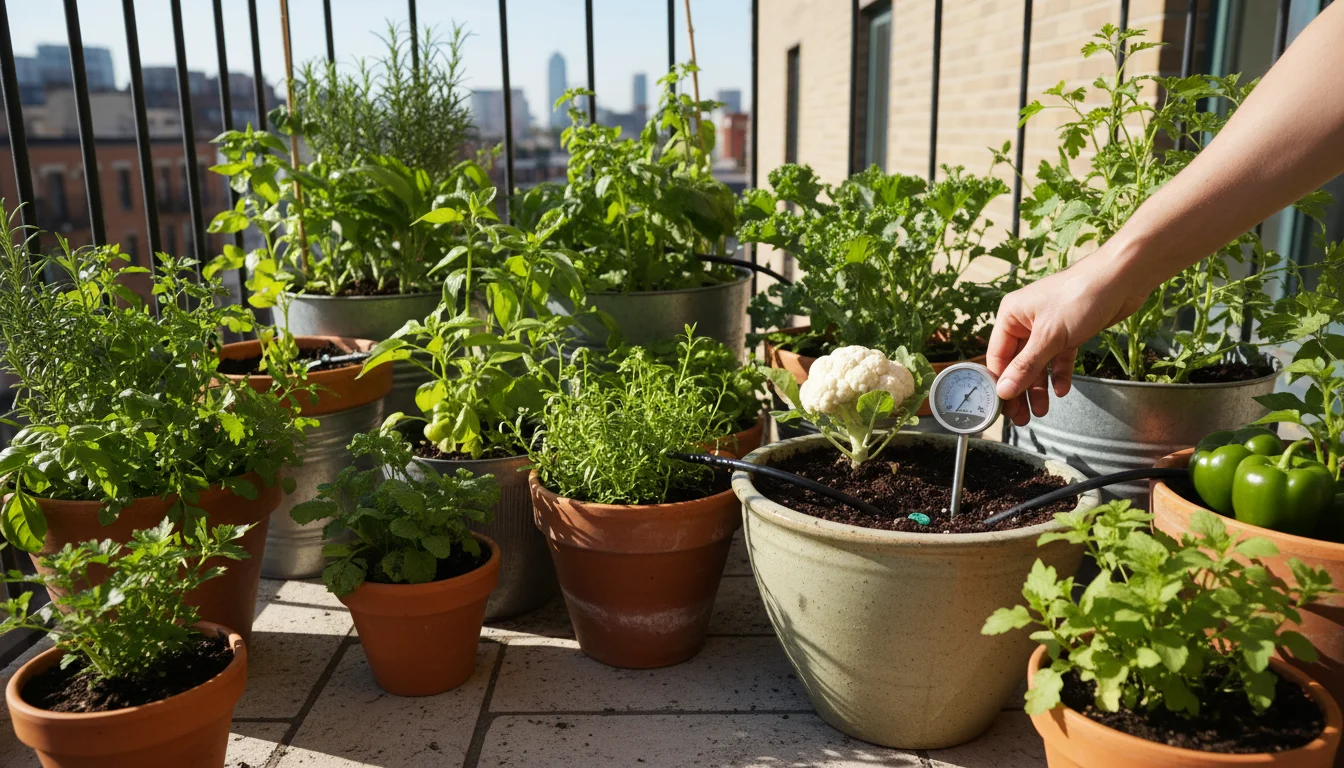
Efficient Watering Systems
In container gardens, consistent watering is crucial. You install a simple drip irrigation system or use self-watering containers to automate watering. This saves time and ensures your plants receive the right amount of moisture, preventing both overwatering and underwatering. For hand-watering, you establish a regular schedule, checking soil moisture levels daily or every other day, depending on the weather and plant needs. A moisture meter can help you accurately assess soil conditions. Implementing smart watering practices significantly reduces your daily maintenance burden.
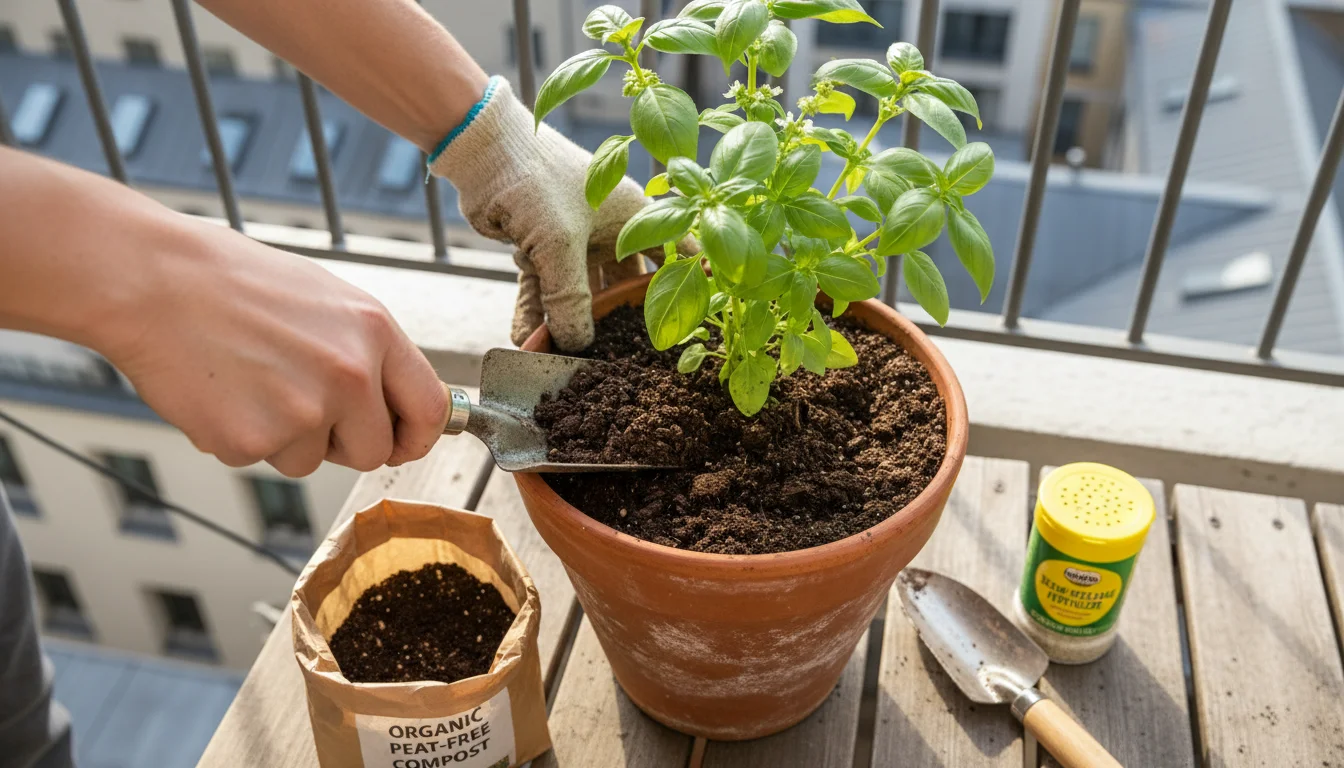
Seasonal Potting Mix Refresh
Container plants deplete soil nutrients over time. You refresh the top few inches of potting mix annually, preferably in spring, with fresh, nutrient-rich, peat-free compost. This provides essential nutrients and improves soil structure without needing to repot all your plants every year. You also apply a slow-release granular fertilizer once a season or use a liquid feed every few weeks, following product instructions carefully. Healthy plants are more resilient and require less intervention.
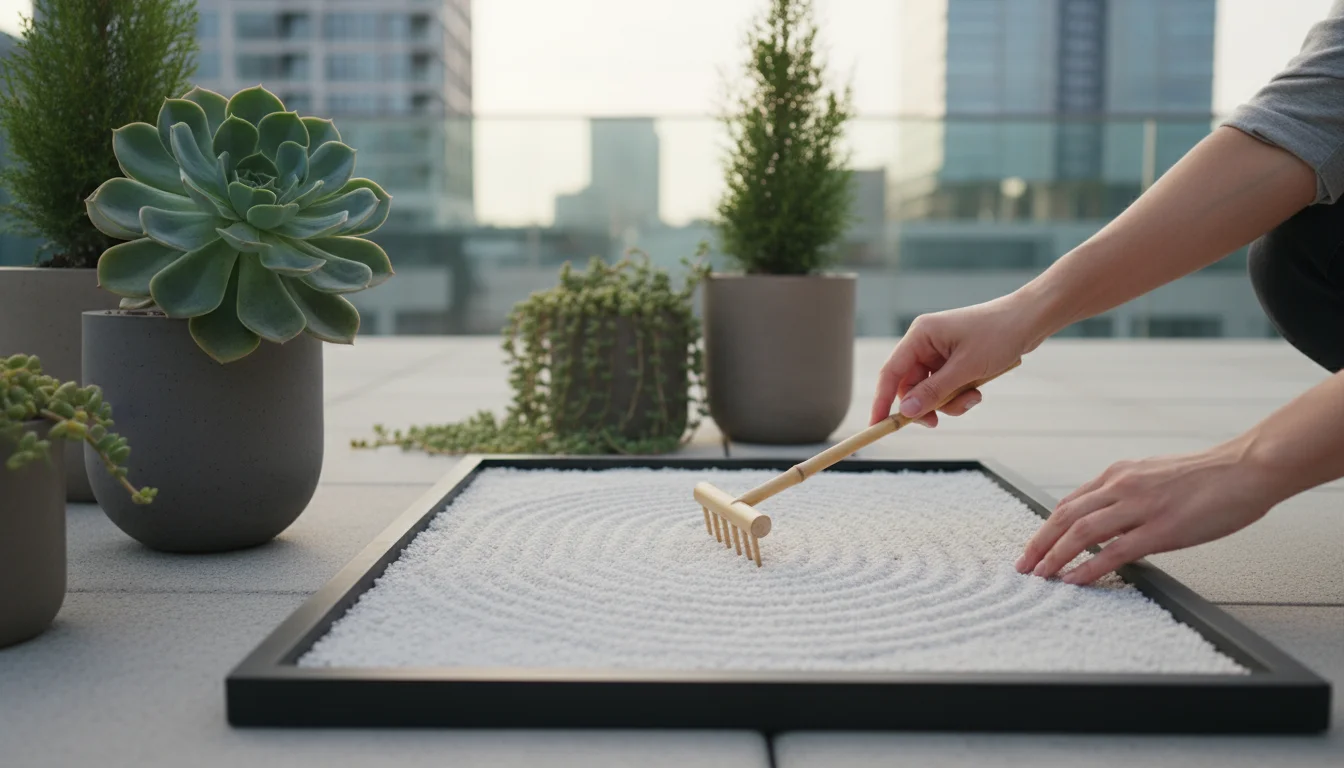
Mindful Raking and Tidying
The practice of raking gravel is a meditative act. You perform this regularly, not as a chore, but as an opportunity for focused contemplation. Beyond raking, you quickly remove any fallen leaves or spent plant material to maintain the clean, uncluttered aesthetic. You view these tasks as part of the Zen experience, an extension of mindfulness. A small handheld brush or leaf blower can make quick work of tidying small areas. A tidy garden contributes directly to a peaceful mind.
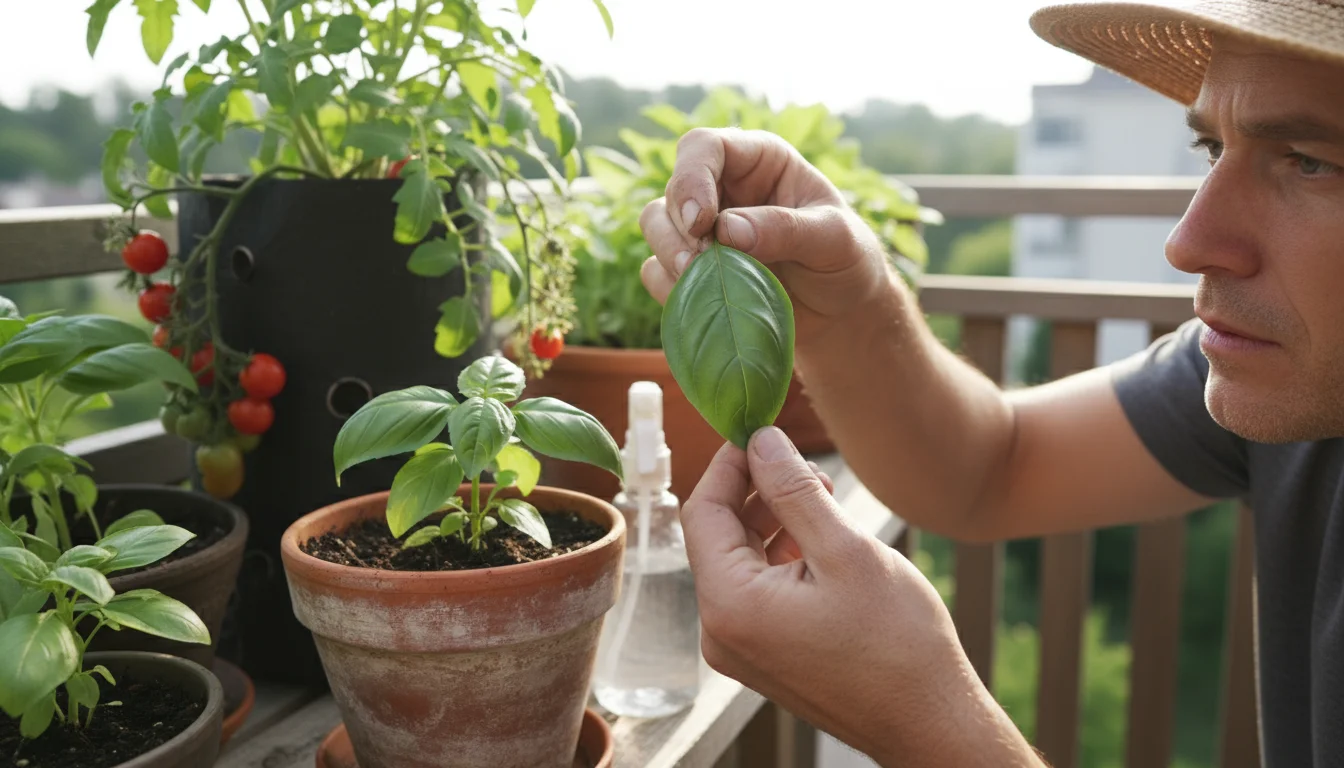
Pest and Disease Monitoring
You regularly inspect your plants for signs of pests or diseases. Early detection allows for prompt, often organic intervention, preventing widespread issues. Use organic pest control methods such as neem oil, insecticidal soap, or manual removal. You focus on prevention by ensuring good air circulation, proper watering, and selecting healthy, resilient plants. A healthy ecosystem in your garden naturally deters many problems.
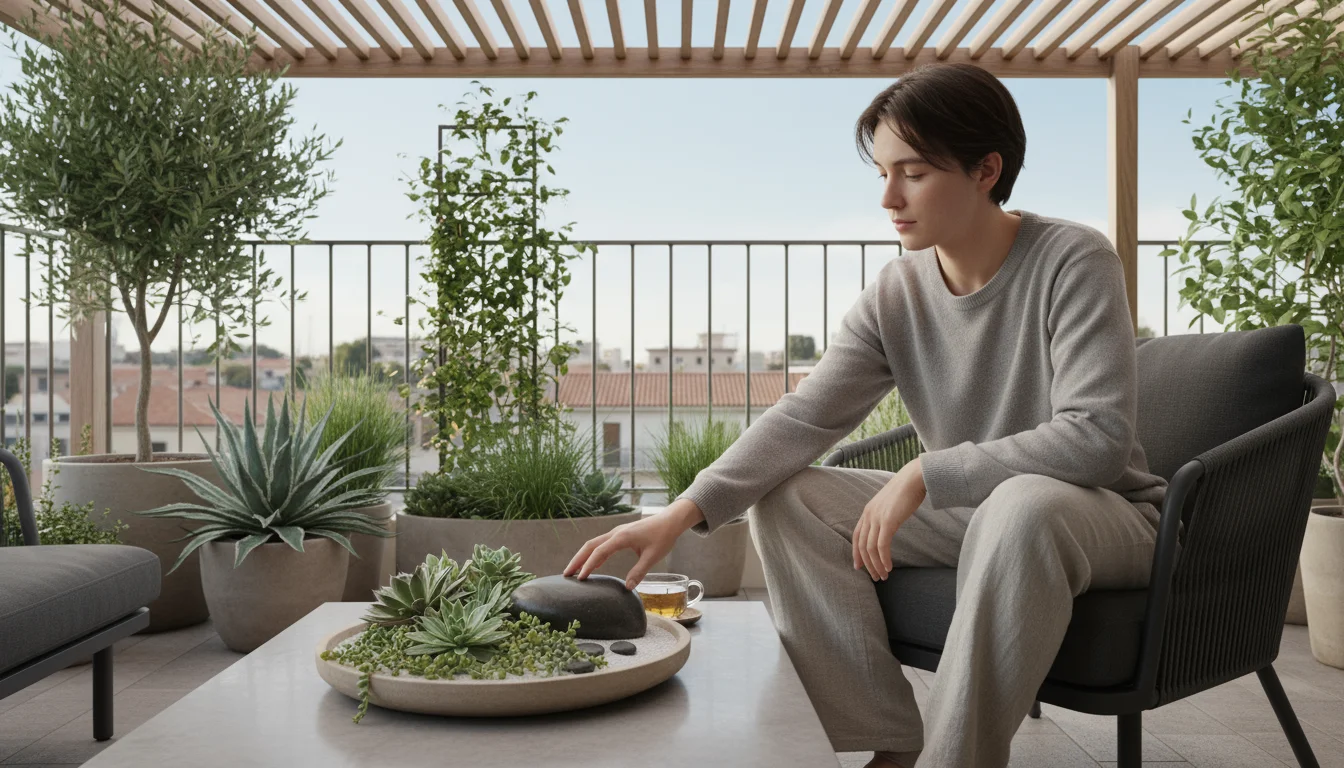
Frequently Asked Questions
How do I create a raked gravel area on a balcony?
You can create a small raked gravel area on a balcony by using a shallow, sturdy tray or planter box. Ensure the container has drainage holes to prevent water accumulation, and place it on a protective mat to prevent scratching the balcony surface. Fill it with a thin layer of fine, light-colored gravel (1-2 inches deep). Use a small rake or even a chopstick to create simple, flowing patterns. This offers the meditative benefit of raking without needing a large space.
Can I incorporate edible plants into a Zen garden?
You can certainly incorporate edible plants, especially those with subtle forms and colors. Focus on herbs like rosemary or thyme with fine foliage, or small-leaved greens such as spinach or lettuce in minimalist containers. Avoid large, bushy, or highly flowering edibles that might detract from the serene aesthetic. You choose varieties that integrate seamlessly with your plant palette, providing both beauty and utility without compromising tranquility.
What are the best low-light plants for a shaded Zen garden?
For shaded Zen gardens, you select plants that thrive in low light conditions. Excellent choices include various ferns like Maidenhair fern or Japanese painted fern, hostas (dwarf varieties), Mondo grass, and certain mosses. You can also use compact varieties of Hellebores, which offer subtle winter blooms. These plants provide lush, green texture and form without requiring direct sun, ensuring your shaded space remains vibrant and calming.
How often should I rake the gravel in my small Zen garden?
You can rake the gravel as often as you like, making it a daily meditative practice or a weekly tidying ritual. The frequency depends on your personal preference and how quickly the patterns get disturbed by wind or activity. You treat the raking not as a chore, but as an opportunity for mindful movement and contemplation, reinforcing the tranquil atmosphere of your Zen garden.
Is it okay to use artificial elements, like faux moss or rocks?
While natural elements are preferred for authenticity, you can use high-quality artificial moss or rocks judiciously in very challenging conditions, such as extremely dense shade or areas prone to constant disturbance. You ensure these artificial elements look as realistic as possible to maintain the naturalness and serenity of your Zen garden. You blend them with real plants and stones whenever possible to achieve a harmonious blend and a more authentic feel. Your main goal is to create a calming, beautiful space, and sometimes a practical solution helps you achieve that.
